|
For the first time in my life I've signed up for a CSA and last week got my first box. It was just crammed with greens! A bunch of lactinato kale, a bunch of rainbow chard, a bag of spinach, two stalks of green garlic, two little red lettuce heads, a bunch of fresh basil, a purple daikon radish, and a dozen eggs! Thankfully we love greens in my household and simple creamed greens is one of my favorite ways to eat them. You may be familiar with creamed spinach, but in the 18th and early 19th centuries, spinach and cream was more likely to be served with sugar than with garlic. It's really not until the turn of the 20th century that savory creamed spinach becomes a steakhouse staple (and even then it's often still got nutmeg in it). Although creamed spinach is quite good, I actually prefer to cream sturdier greens. Kale, in particular, especially the curly kind, is very good creamed. It's not as meltingly soft, but I prefer a little more texture. Many creamed greens recipes use a white sauce or cream cheese, and while those are good, the easiest way to make them is simply to reduce cream with a little salt. It gives the greens a creamy coating without overpowering them. Creamed Spring Greens on ToastThis dish turned out even more delightfully than I expected. Be forewarned - like most dishes of cooked greens, it takes a lot to make a lot. This recipe results in really just two hearty servings - four if you're eating other foods on the side. You can of course substitute just about any hearty greens in this dish. For a richer dish, use heavy cream instead of half and half (which was all I had in the fridge). 2 tablespoons butter 2 stalks green garlic 1 bunch lacinato kale 1 bunch rainbow chard 1/3 cup or so half and half 4-6 small leaves fresh basil 2 inch square of feta, plus extra for garnish salt to taste whole grain toast In a dutch oven, melt the butter over medium-low heat. Slice the green garlic thinly crosswise, white and green stalk (discard the tough leaves), then mince. Add to the butter. Chiffonade the kale and finely slice the stems of the rainbow chard. Add to the butter and garlic and increase the heat to medium. Sautee until the stalks are tender. Chiffonade the swiss chard leaves and add to the pot. Sautee a little longer, until all greens are wilted. Meanwhile, mince the basil finely. Add the cream, basil, and feta. Increase the heat to medium-high and simmer until the cream thickens and is almost completely absorbed. Pile on hot toast and garnish with more feta. The garlic and basil flavors were subtle but delicious. If you like stronger flavors, add more basil and use clove garlic, or add the green garlic later in the cooking process. You might think that a pile of greens with a few crumbs of cheese is not a very satisfying meal, but you would be wrong. The greens are part silky, with tender but toothsome bits of stalk. The feta adds a salty tang and it's all tinged with fragrant basil and garlic. It is very true, however, that two whole bunches of greens does cook down quite a lot, and my husband and I ate the whole pot, just the two of us. So if you're looking to get more greens in your diet, this is a great way to go! But if you're cooking for a crowd, definitely double or triple the recipe. Do you have a favorite way to eat dark leafy greens? The Food Historian blog is supported by tips, members, and patrons on Patreon! Patrons help keep blog posts like this one free and available to the public. Join us for awesome members-only content like free digitized cookbooks from my personal collection, e-newsletter, and even snail mail from time to time! Join by June 30, 2020 on Patreon or with a membership below and get a picnic history packet mailed to your door!
1 Comment
I made curried chickpea salad last week, and it was so delicious, I thought I would share it for Meatless Monday. Although it is not a historic recipe, clearly it's a riff on curried chicken salad, which had its heyday in the mid-20th century, although you still see it on restaurant menus, especially tea rooms and bakeries and small cafes. It's not super clear when precisely curried chicken salad was invented, but there are lots of references throughout 19th century American cookbooks to all sorts of curried dishes - eggs, oysters, veal, cucumbers, shrimp, okra, and yes, chicken, although not in a salad until the 20th century. Country Captain is one of the first curry dishes in the United States, and may have inspired curried chicken salad in the 20th century. Made with browned chicken, onions, curry powder, tomatoes or tomato sauce, and golden raisins or currants, it was meant to be served over rice and likely originated in the Carolinas, where rice cultivation (fueled by slave labor) was common. It is called "country captain" because it was apocryphally introduced via a sea captain returning from India and/or involved in the spice trade. This savory, sweet, and mildly spicy flavor combination has been deemed by some historians to be the first fusion food in U.S. history. But it is unclear where curried chicken salad as made in the United States draws its roots. It may very well be from the flavor profile of Country Captain, and mayonnaise-based salads were exceedingly common by the turn of the 20th century. Some enterprising soul may have come up with the idea independently. However, in 1935, King George V of Britain celebrated his silver jubilee, and although I cannot find an original menu from the event, everyone swears a cold chicken dish with curried mayonnaise was part of the dinner (which some people thought was an unnecessary extravagance during the Great Depression). The dish was recycled (perhaps inadvertently) for Queen Elizabeth's coronation in 1953, this time with some fancier additions of tomato, pureed apricot, red wine, and whipping cream (try the original recipe). Jubilee chicken and coronation chicken, as the recipes have come to be known, are still quite popular in Britain, although they rarely show up on American shores under that name. At the same time, prior to Queen Elizabeth's coronation, we do have recipes in the United States calling simply for cooked diced chicken, mayonnaise, curry powder, and diced celery (like this one). Basically, plain jane chicken salad with some curry powder thrown in for flavor. This 1930 cookbook has a recipe for chicken salad with grapes or raisins, and a recipe for curry salad dressing (curry powder, vinegar, and mayonnaise), but the two aren't put together. So again, the official origins are unclear. But suffice to say, a curried chicken salad with celery and some variation of either golden raisins, currants, diced apple, and/or grapes has become an alternative to the more traditional (and boring) basic chicken salad. I chose to replace the chicken with canned chickpeas in part because poaching chicken is a drag and I hate the canned stuff. But also because not only are canned chickpeas easier and more accessible than poached chicken, they're a little healthier for the gut, too. Vegetarians and vegans often use chickpeas as a substitute for chicken or tuna. It turned out even better than I remembered from the last time I made it, and it seems appropriately vintage, even if it isn't actually historic. Curried Chickpea SaladA quick weeknight supper perfect for when it's too hot to cook, but equally at home at a tea party. To make this vegan, substitute all vegan mayonnaise for the yogurt and mayo. 2 cans (16 oz.) chickpeas, or 3 cups cooked from dried 3 ribs celery, minced 1/2 cup shredded carrots (I use the bagged kind) 1 small, sweet, crisp apple, minced 1/2 cup Greek yogurt 1/2 to 1 cup mayonnaise 1/2 to 1 tablespoon high quality curry powder salt & pepper to taste Drain and rinse the chickpeas, then mash roughly with a fork. I don't like any whole chickpeas in mine, but neither do I want a puree. Add the celery, carrots, and apple and mix well with a fork to combine. Add the yogurt and curry powder and mix, then add the 1/2 cup of mayo and mix. If too dry, add more mayo. Taste and add more curry powder, salt, and pepper if necessary. The warm spices of the curry powder set off the creaminess of the mayo and yogurt and the sweetness of the apple nicely, and the celery and carrots add crunch and texture. I like mine served open-faced on whole grain toast. The hubby prefers his sandwich closed on untoasted bread. You can also eat it with crackers, in a wrap, or frankly, with a spoon. If you want to try something more country captain style, add golden raisins and a little tomato paste. For something more coronation-style, try diced dried apricots or a few tablespoons of mango chutney. Add lemon or lime juice for tang, or leave it out. But whatever you do, don't use that little jar of curry powder that's been in the back of your spice cabinet for years. Get yourself a new jar or better yet, go to a store with a bulk spices section and get some fresh stuff that way. Have you ever had curried chicken salad? Or chickpea salad? Tell us your favorite quick weeknight dishes in the comments! The Food Historian blog is supported by patrons on Patreon! Patrons help keep blog posts like this one free and available to the public. Join us for awesome members-only content like free digitized cookbooks from my personal collection, e-newsletter, and even snail mail from time to time! Join by June 30, 2020 and get a picnic history packet mailed to your door! Spring has sprung, with daffodils nodding in the frosty air and trees starting to bud out. So it seemed apt to celebrate with another tea party! Once again, our tiny tea party with just one friend featured all-vegetarian recipes, since said friend is a vegetarian. And also because chicken salad, while delicious, seems lazy when you're looking for something new and interesting to try. This one featured recipes from a new cookbook acquisition, The Lunch Box and Every Kind of Sandwich by Florence Brobeck. My edition was published in 1949, although I believe the original was published sometime in the 1930s. It's also a bright orange library binding without the original dust jacket. So no pretty cover to show off this time! Unlike last time, my ambitious list didn't go QUITE as planned. Adapting historic recipes can be like that. 1940s Spring Tea Party MenuOpen-Faced Radish and Butter Sandwiches on White Open-Faced Cucumber and Cream Cheese Sandwiches on Rye Blue Cheese, Pecan, and Celery Sandwiches on Whole Grain 1940s Whole Wheat Honey Quick Loaf 1940s "Plain Buns" with Butter and Jam Fresh Sugared Strawberries Strawberry Lazy Daisy Cake Walnut Tassies Hot Cocoa Tea with Cream and Sugar The SandwichesRadish and butter sandwiches just scream spring to me, and they're very easy to put together. To make things extra fancy, cut sliced bakery bread (not the squishy kind from the bread aisle - hit the bakery and get peasant, sourdough, brioche, or in a pinch, French or Italian bread) with a cookie or biscuit cutter into rounds. Spread with soft butter, top with thinly sliced radishes, and a sprinkling of salt (I used pink Himalayan). The salt is what makes the radishes look wet, but adds a nice flavor. Open-faced cucumber sandwiches are equally easy. Make a cream cheese spread with softened cream cheese (15 seconds in the microwave does the trick), and thinly sliced scallions and dried dill. You can use jarred garlic or minced sweet onion instead of scallions. Spread it on any kind of rye bread. Top with English (a.k.a. seedless - even though they're not - or burpless) cucumbers. If you're hungry, top with another slice of bread spread with the cream cheese mixture, otherwise serve open-faced (which is prettier and more Scandinavian). If you're going really fancy, use fresh dill in the cream cheese and top each sandwich with a sprig of fresh dill. The little square sandwiches were a mashup of two recipes from the The Lunch Box - "Roquefort Cheese and Celery" and "Pecan and Celery" fillings. I decided to mash them up - literally - into one, slightly more interesting filling. I mixed a quarter pound of very soft blue cheese with about a cup each of diced pecans and finely minced celery, with a splash of Worcestershire sauce. It was a curious mixture. Next time I would probably add cream cheese to temper the blue cheese a little, and maybe add some scallions and/or smoked paprika. But otherwise it was quite nice on squares of thinly sliced whole grain bakery bread. Half the fun of tea sandwiches is the fun and dainty shapes you create. I always find it easier to slice the bread first, and then fill, but some people do it the other way around. Whole Wheat Honey Quick LoafWhen one encounters a recipe entitled "Honey Bread," one expects it to taste of, well, honey. Instead, the spicing of this little quick bread leaves the impression of gingerbread more than honey. Curiously, the recipe also contains no fat. I was skeptical, but aside from an accidental overbaking (which I think dried it out), it turned out fairly decently, if scarcely tasting of honey. I followed this recipe pretty much to the letter. It makes a tall loaf with a springy crumb - not at all the crumbly, moist, cake-like texture we come to associate with most quick breads today. Much more like true bread texture than cake. Here's the original recipe: 2 cups flour (I used white whole wheat) 1 teaspoon baking powder 1 teaspoon soda 1 teaspoon salt 1 teaspoon ground ginger 1/2 teaspoon ground cinnamon 1 egg 1 cup milk 1/2 cup liquid honey Sift the flour and measure it; then sift three times with the dry ingredients (or if you're lazy, just whisk everything together). Beat the egg with the milk, and stir this into the dry ingredients alternately with the honey. Beat and pour into a greased loaf pan. Bake in a moderate oven (350 degrees F.) about forty-five minutes or until done. Tip out of the pan and cool on a rack. Serve with salted butter, honey butter, and/or jam. 1940s "Plain Buns"This recipe is deceptive. The title, "Plain Buns" is not accurate - flavored with lemon zest and currants (I used golden raisins), the flavor was surprisingly strong and delicious. Designed to be used with cake yeast, all I had was rapid rise yeast, so I think they got a little overproofed. I'm going to try making them with active dry yeast again, so I won't comment too much on what I did, and just give you the original recipe: 1 cup scalded milk 1 tablespoon sugar 1 yeast cake 1 cup flour 2/3 teaspoon salt 1/4 cup butter or margarine 1 tablespoon lard or shortening 1/4 cup sugar 1/2 lemon, grated rind 1 cup seedless raisins or currants (I used golden raisins) 2 or more cups flour 1 egg yolk Scald the milk, add the sugar to it and, when it has cooled to lukewarm, add the yeast cake broken into small pieces. Cover this and let it stand twenty minutes. Then stir in one cup of sifted flour mixed with the salt. Cover and let this rise until light. Work the butter and lard together until creamy, add gradually the sugar, then the lemon rind. Combine with the first mixture, add the sifted flour (about one and one-half cups) to make a stiff sponge. Beat it well. Cover and let it rise again. Then add chopped raisins or currants and enough more sifted flour to make a soft dough. Cover and let rise again. Then pull off pieces and shape into large rolls. Arrange on a greased baking sheet one inch apart, cover them, and let rise again. Then brush them over with egg yolk, diluted with one teaspoon of water. Bake in a moderately hot oven (375 degrees F.) twenty minutes. This makes twenty to twenty-four buns. Obviously I didn't let rapid rise yeast go through fours separate rises! But I think it still overproofed a bit. I also forgot the egg wash! Which meant the buns looked a bit more like rocks. But they sure tasted good, and that's what mattered. If you enjoy the citrusy flavor of hot crossed buns, you'll love these. Strawberry Lazy Daisy Cake & Walnut TassiesI've made Strawberry Lazy Daisy Cake before, but this time I was somehow out of coconut, so I used chopped pecans for the topping as chopped nuts are the other traditional topping ingredient. Not QUITE as good as the coconut, but still yummy. Sadly for you, I did not make the walnut tassies (my friend did), and thus cannot share the recipe. However, she, like I did, had to make some substitutions! For Walnut Tassies are supposed to be Pecan Tassies, but my friend was out of pecans, so walnuts it was. The original recipe is supposed to be like tiny pecan pies, but tiny walnut pies were equally good. One of the primary joys of tea parties, of course, is in the dishes. I've got my vintage Fire King Azurite Charm teacups and saucers, with newly acquired luncheon plates, some milk glass compotes with sugared strawberries in them, milk glass D ring mugs for cocoa, and assortment of vintage servingware in springy shades, on a vintage floral tablecloth. With tulips in the middle, of course. If you missed the last spring tea party, you can check it out here, with a promise of more to come! Have you had a tea party recently? What favorite food did you feature? Tell us in the comments! The Food Historian blog is supported by patrons on Patreon! Patrons help keep blog posts like this one free and available to the public. Join us for awesome members-only content like free digitized cookbooks from my personal collection, e-newsletter, and even snail mail from time to time!
It's been cold and snowy lately here in the northeast, and sometimes you just have to have soup. But going to the grocery store in a snowstorm is ill-advised. This recipe lets you use up all kinds of bits and ends that might be languishing in your refrigerator.
This particular recipe is my own creation, based on what was in my kitchen, but is entirely inspired by history. Several parts of history, in fact. The first is reducing food waste. Historical peoples did not throw out potatoes just because they were starting to sprout, or lettuce because it was a bit wilted, and neither should you. Putting lettuce in soup is also extraordinarily historic, and a practice that should be revived. Another is that this recipe is based on one of my favorites, "Green Onion Soup," from Rae Katherine Eighmey's Hearts & Homes: How Creative Cooks Fed the Soul and Spirit of America's Heartland, 1895-1939 (2002). Eighmey read hundreds of agricultural magazines and gleaned recipes and wisdom from the farm home sections. Found in the December 26, 1924 issue of Wallace's Farmer, Green Onion Soup is a unique recipe. A combination of simply green onions and potatoes, the soup is cooked in a small amount of water, and then partially mashed right in the pot without draining. Cream and milk are added to thin the soup and add richness. The soup is comforting and nourishing and retains all of the vitamins and minerals that might otherwise be lost by draining away the cooking water. Which brings me to the final inspiration - vitamin retention in the style of recipes from World War II. By cooking the vegetables in the water that becomes the broth, you lose far fewer nutrients and flavor. Plus, other aspects of the soup are also quite appropriate to WWII - it's meatless, in line with rationing, and makes good use of milk, a favorite 1940s ingredient. Creamy Kitchen Sink Soup Recipe
I had a number of foods that needed using up that made their way into this soup: a few red potatoes, a head of wilted red lettuce, the fresh bits of baby spinach out of a box that was on the verge of getting slimy, a whole celery root starting to go a bit soft, some garlic starting to go green in the middle, and the tail end of a gallon of milk. The only fresh addition was two bunches of green onions. You could modify it pretty much however you want - any kind of greens, any kind of onion, any kind of root vegetable.
4 red potatoes 2 bunches green onions (scallions) 1 celery root 3 cloves garlic 1 head red lettuce 1-2 cups baby spinach water salt pepper 1/2 cup half and half 1 cup buttermilk whole milk Scrub and dice the potatoes, cutting away any eyes or bad parts, but leave the skin on. Slice the green onions, white and green parts. Cut away the knobbly skin from the celery root, then cut into small dice. Mince the garlic, wash and chop the whole head of lettuce. Add it all, with the spinach to a large stock pot and add water not quite to cover. Add at least 1 teaspoon salt (I used wild garlic flavored crystal salt languishing in a drawer) and bring to a boil. Reduce heat and simmer hard until all vegetables are very tender and potatoes fall apart when pierced with a fork. Do not drain. Using a potato masher or sauce whisk, mash vegetables in the pot until blended with the water, leaving some chunks. Add a the half and half and buttermilk (or you could use part heavy cream, or leave out the buttermilk, or just use milk) then add milk to thin out the soup and to taste. Taste for salt and add more if necessary, along with pepper and whatever other herbs and spices you like. Serve nice and hot with buttered bread or toast. The buttermilk does add a nice, distinctive tang. If you don't have any, add a dollop of sour cream, or some plain yogurt, or a splash of lemon juice. You could make this vegan with plant-based milk and butter. For a different flavor, add whatever fresh herbs you have lying around - dill, parsley, basil, and cilantro would all be good here. Add vegetable broth and some lemon juice instead of milk for a bright, brothy soup instead of something creamy. Use sweet potatoes or squash and tomato broth with the greens. The possibilities are really endless.
If you'd like more interesting recipes, you can purchase Eighmey's book from Bookshop or Amazon - either way, if you do, your purchase will support The Food Historian!
The Food Historian blog is supported by patrons on Patreon! Patrons help keep blog posts like this one free and available to the public. Join us for awesome members-only content like free digitized cookbooks from my personal collection, e-newsletter, and even snail mail from time to time!
I love winter, don't get me wrong, and the frequent snowstorms and squalls we've been having here in New York have actually lifted my spirits more often than not. I vastly prefer fluffy white snow and prettily iced trees to muddy brown landscape and grey days. That being said, sometimes you just need to brighten your day, and this was exactly the little escape I needed. I spent the morning cooking and baking, a friend brought cookies and tulips, and we sat down to a delightful tea party, complete with my new favorite electric tea kettle. It was an excuse also to use some of my extensive collection of vintage glassware. I didn't match, but that was okay. Who can say no to hobnail compote dishes and Charm teacups?
Vegetarian Spring Tea Party Menu
Deviled Eggs
Lentilwurst Sandwiches with Mustard on Pumpernickel Cucumber Sandwiches With Herbed Cream Cheese on White Ruby Red Grapefruit Sections in Light Syrup Oatmeal Nutmeg Scones Citrus Yogurt Olive Oil Cake Chocolate Chip Cookies Hot Cocoa Assorted Tea with Cream and Sugar
I seriously considered making Earl Grey madeleines, and maybe cream biscuits with assorted jams, but with only three of us, this was plenty. We remarked on the funny thing about tea parties is that everything is fairly small, so it doesn't seem like much food, but it certainly fills you up quickly!
The menu was fairly easy. Our friend brought the cookies, the grapefruit was pre-sectioned from the refrigerated produce section of the grocery store. The most involved recipe was the citrus yogurt olive oil cake, which was okay, but not as nice as I had hoped, so I'm not going to include the recipe here. I made this tea party vegetarian in part because our friend is vegetarian, but also because vegetarian food just seems a bit lighter and more appropriate for a tea party. You can satisfy even the heartiest appetite with lentilwurst sandwiches - the mushroom/lentil mixture really does smell and even taste like sausage, thanks to the mix of herbs and spices. I first made lentilwurst back for our White Christmas themed party, and I've made it several times since. Cucumber Sandwiches
What is a tea party without cucumber sandwiches? I went extra-fancy here and cut rounds out of the centers of soft white sandwich bread (the bakery kind, not the pre-sliced kind). Frankly, it didn't make a lot of rounds, so I left these open-faced. I'm saving the outer scraps for bread pudding later this week. The rest of the recipe is simple. You'll need:
1 package neufchatel cream cheese 2 scallions dried dill weed a tablespoon or two of milk, cream, or buttermilk 1 English (or burpless/seedless) cucumber white bread rounds Soften the cream cheese at room temperature. Thinly slice the scallions, white and green parts, and add to the cream cheese with the dill weed and liquid. With a fork, mash the lot together until well mixed. Spread onto the rounds of bread and top with thin slices of cucumber. If you want to be extra fancy, you could garnish with fresh dill or chives. The bread will dry out as you let it sit out, so try to do these sandwiches at the last minute, or cover and refrigerate them. Deviled Eggs Recipe
Deviled eggs are one of my favorites, but I find most deviled eggs that other people make to be rubbery and bland. There are three tricks to deviled eggs - don't overcook the eggs, boil the eggs the same day you plan to serve them, and make the yolk filling smooth, creamy, and generous.
12 large eggs 1/4 cup mayonnaise 1/4 cup sour cream 2 tablespoons Dijon mustard In a large pot, cover your eggs with cold water by several inches. Bring pot of cold water to a boil over high heat and let boil for 1-2 minutes. Then turn off heat, set a timer for 15 minutes, and let eggs continue to cook as the water slowly cools down. When the 15 minutes are up, remove the eggs to a bowl of ice water to stop cooking and cool down. Peel the eggs (crack them under water for easiest peeling), halve them, and remove the yolks. With a fork, mash the yolks finely until there are no chunks left and the yolk mixture is powdery. Then add 2 tablespoons Dijon mustard, and 1/4 cup each mayo and sour cream. Mix well. If the mixture seems dry, add another spoonful of mayo and sour cream, until the yolk mixture is fluffy, but not runny. Fill the eggs generously, in the hollow left by the yolk and pile some more on top. I just use a spoon and dollop, but you can fill a pastry bag or a plastic sandwich bag with the end cut off if you want something a little more polished-looking. If desired, garnish with paprika, black pepper, and/or chopped chives, but I like mine plain. Keep cool until ready to serve, and watch them fly off the tray. Oatmeal Nutmeg Scones
Scones are another essential part of a tea party. These are my absolute favorite recipe, straight from the eminent Dorie Greenspan. I didn't make too many changes, except halfway through the recipe I realized I only had room temperature butter. Thankfully, my husband reminded me of the several pounds of butter in our chest freezer, so instead of cutting in cold butter like the recipe calls for, I grated frozen butter and mixed that in, which worked well. These scones have a nutty, toasty, nutmeg-y flavor and using fresh-grated nutmeg really makes a difference, although you shouldn't use quite as much as pre-ground nutmeg
1 egg 1/2 cup cold buttermilk 1 2/3 cup all-purpose flour (I used white whole wheat) 1 1/3 cup old fashioned rolled oats 1/3 cup sugar 1 tablespoon baking powder 1/2 teaspoon baking soda 1/2 teaspoon salt 1/4 teaspoon nutmeg 10 tablespoons cold, unsalted butter (1 stick, plus 2 tablespoons) Preheat the oven to 400 F. In a small bowl, whisk together the egg and oatmeal. In a larger bowl, whisk all dry ingredients together, than cut in butter (or used grated frozen butter). Add egg mixture and toss with a fork until mostly combined. Knead a few times until the remaining flour is absorbed, then pat into a round and cut into wedges. Bake 20-22 minutes or until golden. Cool for a few minutes before serving. Serve warm with plenty of salted butter. Perfect Tea
The one lovely thing about using an electric kettle for tea is you can have the kettle right at the table, which is what we did. Cooking at table with electric appliances was common in the 1930s and '40s, especially at breakfast. It was fun to be able to recreate that fashion today! Plus, being able to reheat the water right at the table certainly made a difference in refills.
In all, this teensy little party was super fun, and I'm definitely having a tea party again! Something about getting out the fancy dishes, fresh flowers, a candle or two, an assortment of tempting little treats, and plenty of hot tea makes everything better. Plus I have plenty of other recipes to share. So many, in fact, I'm considering writing a little tea party cookbook. Would you be interested if I did?
Have you ever had a tea party? Do you have favorite tea cups and dishes? Tell us in the comments!
The Food Historian blog is supported by patrons on Patreon! Patrons help keep blog posts like this one free and available to the public. Join us for awesome members-only content like free digitized cookbooks from my personal collection, e-newsletter, and even snail mail from time to time!
White Christmas has a famous scene about sandwiches. In it, Bing Crosby (playing Bob Wallace) waxes lyrical on the types of women he dreams about when he eats various sandwiches as a bedtime snack. Rosemary Clooney (playing Betty Haynes) teasingly asks him what he dreams about when he eats liverwurst. Bob shudders in response. I'll be honest - I've never had liverwurst. Some people love it, some people hate it. Maybe someday I'll try it, but my vegetarian friend saved the day. The phrase "lentilwurst" popped into my mind and I decided to run with it. This recipe is the only one that isn't based on a historical recipe (for obvious reasons), but lentils were around in the 1950s and were used as a vegetarian substitute for meat. This recipe also takes after slightly the infamous vegetarian bean loaves and nut loaves of the late 19th and early 20th century. In fact, one of the recipes I considered for the menu was "Boston Roast," which is a take on meat loaf, only made with beans (hence Boston) instead. I based my recipe loosely on this one, but with a few tweaks of my own. Here's my version, which you could easily make vegan by using olive oil or butter substitute, and vegan mayonnaise. Lentilwurst (a.k.a. Vegetarian Liverwurst)1 cup red lentils 1 1/2 cups water 1/4 cup butter (half a stick) 1 pint baby bella mushrooms 1 teaspoon dried sage (not ground - use 1/2 teaspoon if using ground) 1 teaspoon smoked paprika 1/2 teaspoon ground ginger 1/2 teaspoon ground mace (can use nutmeg instead) 1/2 teaspoon black pepper 1/2 teaspoon onion salt 2 heaping tablespoons mayonnaise Rye bread Dijon mustard In a 2 quart saucepan, bring lentils and water to a boil, then reduce heat and cook until lentils are very soft and have absorbed all water (watch out for boiling over and stir occasionally). Meanwhile, clean and finely mince mushrooms. When the lentils are done, remove to a glass dish to cool. Wash the same saucepan and add the butter and spices. When butter is melted, add mushrooms and cook over medium to medium-low heat until the juices and butter are largely reduced. Mix mushrooms, lentils, and mayonnaise until well combined. Chill in a glass container in the fridge. When ready to serve, slice or spread onto rye bread that has been thinly spread with mustard. Eat open faced or closed. The lentilwurst sandwiches were the surprise hit of the evening. Everything on the menu was good, but this was so good I was very sad I hadn't made a double batch, and have since gone out and bought more mushrooms precisely so I can make more. The mushrooms and lentils gave it a meaty texture, and the salty, spicy flavors of the seasonings went very well with the rye bread and mustard (traditional liverwurst sandwich ingredients). I did not add onions or pickled onions to the sandwiches as I had considered, but that would be another lovely addition. We gobbled this right up with no regrets. Do you think lentilwurst goes with White Christmas (1954)? Let me know in the comments! And be sure to follow the White Christmas tag or visit the original menu post for the rest of the White Christmas Dinner and a Movie menu. Want to see more Dinner and a Movie posts? Make a request or drop your suggestions in the comments! The Food Historian blog is supported by patrons on Patreon! Join us for awesome members-only content like free digitized cookbooks from my personal collection, e-newsletter, and even snail mail from time to time! White Christmas (1954) is probably one of my favorite holiday films. I did not grow up watching it. In fact, my husband was the one who introduced me to it, but I fell in love. It's got everything - WWII, great relationships, music, dancing, everything wonderful and awful about putting on a show (former theater nerd, here), and of course, a heartwarming tale in a beautiful setting. Not to mention Bing Crosby's velvet voice. So when a friend, who had never seen White Christmas, suggested I make a dinner menu to go along with the film, I couldn't resist. She knew I'd done similar menus before (Star Wars and The Hobbit, respectively, both birthday parties I threw myself), but this one was fun because I could delve into all my vintage cookbooks for ideas. Now, there are a few foods mentioned or shown in the film. One of the first (and best) is the scene in the club car on the way to Vermont. Mentioned or shown foods include:
The other major scene is after hours, when sandwiches and buttermilk are the order of the day. Mentioned or pictured in this scene are:
Other foods shown include hotdogs by the fire and, of course, the General's enormous birthday cake. Clearly dinner is served in that scene, but it's difficult to see what. There was an added hiccup in all this menu planning - the friend in question is vegetarian. So guess what? A lot of that list is out the window! But I relish a good challenge, so I took to my cookbooks and got thinking. And here's what I came up with: I based my recipes largely on the foods of the late 1940s, focusing on New England recipes. Because although White Christmas was released in 1954, and clearly takes place in the 1950s, it was influenced by the earlier (and slightly more racist) Holiday Inn, which came out in 1942. In addition, the WWII connection between Bob and Phil (a.k.a. Wallace & Davis), made me think this menu needed a little bit of a 1940s flavor. Here's the menu:
No, those aren't typos - "lentilwurst" is what I call vegetarian liverwurst and while everything was good, that was the surprise hit of the night. I wish I had made a double batch because it was gone almost instantly. Maple Sirup (also not a typo - that's how they spelled it in the cookbook) Gingerbread was another delightful (if rather expensive) hit. Thankfully, we did not eat the whole cake in one sitting, although two days later we're down to the last piece. In an effort to spare you from the world's longest blog post, I'm going to be posting the recipes each day this week (probably more than one per day) as their own blog posts. Don't worry - I'll link them back here as they're posted so you can always find everything in one spot. You should get the whole menu before the weekend - just in time to plan a White Christmas Dinner and a Movie of your own! Happy eating! Want to see more Dinner and a Movie posts? Make a request or drop your suggestions in the comments! As always, The Food Historian blog is supported by patrons on Patreon! Join us for awesome members-only content like free digitized cookbooks from my personal collection, e-newsletter, and even snail mail from time to time! In one of my recent media interviews, a journalist asked what was my go-to pandemic snack, and this was the only thing I could think of. I made it pretty early on in the pandemic as a way to have something indulgent but still vegetable-y. It's not based in history really, just straight out of my brain. But it combines the best worlds of BLTs, tomato sandwiches, and creamy chip dips in one. I call this "BLT" Dip, but it doesn't actually have any lettuce or even bacon in it. And you can put bacon in it if you want to (heck, you could add a sturdy lettuce like chopped romaine, too, if you want), but the smokiness of the smoked Spanish paprika really does a better job, I think, at bringing out the smoky, salty, tastiness of bacon without the extra calories. It makes this dip more friendly for vegetarians, too! And you could replace with mayo and sour cream with all vegan mayo, if you want. The smokiness and creaminess is what makes this dip extremely tasty with potato chips and kind of addictive. It makes a lovely side to grilled foods, or as a light lunch or dinner for when it's just too hot to cook. If you garden and find yourself with a glut of cherry or grape tomatoes, this is a great way to enjoy them! Creamy, Smoky Tomato Dip Recipe1 pint cherry tomatoes 2-4 scallions pinch of salt 1 cup mayonnaise 1/4 cup sour cream 1-2 teaspoons smoked Spanish paprika Cut the cherry tomatoes in half lengthwise and then slice cross wise into chunks or slices. Place in a bowl and add a pinch of salt, stirring to combine. Then thinly slice the scallions, white and green parts, and add to the tomatoes. Add mayonnaise (at least 1 cup), sour cream (just a dollop or two), and the Spanish paprika, and stir thoroughly. Serve with potato chips - we prefer kettle chips. You could also theoretically pile this on toast and pretend it's an extra-delicious tomato sandwich. If you enjoyed this recipe, please consider becoming a patron on Patreon! Patrons get access to special members-only content, including blog posts and free digital cookbooks from my personal collection. And your support helps keep content like this free and available to everyone.
Many of my fans and patrons have been interested in and asking for more of what I call "sturdy salads" - lovely things made of vegetables and legumes and occasionally meats that can be stowed away in the fridge and eaten warm or cold or room temperature. One of our favorites is the Herbed Red Bean Salad I've made many times before. But it was very hot the other day, I was feeling green bean-ish, and was inspired by this little cookbooklet: Good Housekeeping's Book of Salads to heighten appetites and brighten meals (1958). When I made this salad I couldn't find the recipe that I KNEW had inspired it, but I finally tracked it down in this lovely little cookbooklet. Now, there are definitely a million recipes in here for gelatin-and-whipped-cream-based "salads," but there are a surprising number of sturdy vegetable salads - just the kind I like. Green Bean Parmesan Salad (1958)Here's the original recipe, in case the print is too small to read! 2 lb. green beans, cut on angle into 2" pieces 1 small onion, minced 1/2 cup salad oil 1/4 cup wine vinegar 1 teasp. salt 1/4 teasp. pepper 1/2 cup grated Parmesan cheese 2 tablesp. chopped anchovy fillets (optional) Cook beans in 1" boiling salted water, covered, until tender - about 15 min. Drain; cool. Toss beans with rest of ingredients. Refrigerate. Green & White Bean Salad with Lemon & ParmesanMy recipe was a riff on that original. I wanted something a little more substantial for a supper dish, and I thought lemon would be a nice addition to the vinaigrette with the Parmesan. I will say, if I were to make it again, I would actually remember this time to include either minced white onion soaked in lemon juice, or thinly sliced scallions (which I had! But forgot to put in). Diced celery would also not be remiss in this salad - it needs a little extra crunch. 2 cans white cannelini beans, drained and rinsed 1 pound green beans 3 tablespoons olive oil 3 tablespoons lemon juice 2 tablespoons cream (optional) 1 tablespoon dijon mustard 1/4 to 1/2 cup finely shredded Parmesan Bring a few inches of water to boil in a large stock pot. Snap the stem ends and any bad ends off the green beans. Add to the boiling water and cook, covered, for 3-5 minutes (15 is too long!) until bright green and tender. Meanwhile, mix the olive oil, lemon juice, cream, and mustard in a serving bowl and fold in the white beans. Add the hot green beans and mix thoroughly to coat with the dressing. Add the Parmesan and toss to mix well. Serve room temperature with toast. I will say - this would probably be better if you mixed the dressing and the white beans the day before to let the beans fully marinate before adding the green beans. Don't have cannellini beans? Substitute boiled cubed potatoes, steamed cauliflower florets, small white navy beans, or even pasta. Don't have green beans? Substitute asparagus, snow peas, frozen garden peas, or even broccoli. And if you're trying to stay away from carbs altogether, try a combination of just the green vegetables in the sauce. If you liked this recipe, please consider becoming a member or joining us on Patreon. Members and patrons get special perks like access to members-only content, and discounts on programs and classes.
In these days of quarantine cookery, sometimes you run out of pasta. But no worries! If you happen to have semolina flour on hand (I use it for dusting pizza crusts - works like a charm), or even if you have some spare Cream of Wheat lying around, you can make these delightful gnocchi. They are also a good way to use up any milk that needs using as it uses 2 cups (a.k.a. a pint). Simple Italian Cookery was one of the first vintage cookbooks I ever cooked from, and it was this recipe. Published in 1912 by Antonia Isola, Simple Italian Cookery is considered one of the first Italian cookbooks published in America. Except, "Antonia Isola" was a pseudonym for Mabel Earl McGinnis, a New Yorker who had spent several years living in Rome before turning her hand to cookbook authoring. Simple Italian Cookery was her only known published cookbook and little else is known about her. Despite a fairly thorough search, I was able to turn up little more than references to her pseudonym. She apparently married a Norvell Richardson at some point, and a Mr. & Mrs. Norvell Richardson show up in 1956 in a Virginia newspaper, but simply in a list of guests. I did find this little reference in my newspaper searches as well. It's an interesting advertisement for the book, published February 24, 1912 in the New York Sun. McGinnis is touted as an "expert" and the reference to "Italian cookery is far from being all 'garlic and macaroni'" is an interesting a slightly racist reference to the cuisine of Italian Americans. By framing this book as "authentic" Italian, rather than the Americanized version of impoverished Italian immigrants, the publisher is setting Simple Italian Cookery in an interesting position - touting its social palatability by associating it with Europe and romantic Italy, trying to convince "American housekeeper" (i.e. white Anglo middle-class women) that the food is simple to prepare and affordable, and also distancing itself from connections to immigrant Italians, who were counted among the "undesirable" immigrants flooding New York (and other locales) in droves during the early 20th century. Gnocchi di SemolinaMabel's recipe is really a version of "Gnocchi alla Romana," made from semolina cooked on the stove top, cooled, and then baked again. They predate potato gnocchi, of course, and I vastly prefer them to the potato version. Plus, they're easier! The original recipe doesn't call for tomato sauce, although they are delicious that way. Parmesan cheese would be traditional, but any kind of aged cheese would work. The recipe above is fairly straightforward, especially if you use a pint canning jar to measure. Be forewarned, however, that two hungry adults can eat this whole pan by themselves (with seconds). A serving size is about 5 squares, and this recipe makes about 20 squares. So you may want to double it for more people, or if you aren't planning a salad or other side dish to accompany it. 1 pint of milk (2 cups) pinch of salt 1/2 cup farina/semolina flour/cream of wheat 1 egg butter cheese In a 2 quart saucepan over medium heat, bring the milk to a boil (watch it - it boils over easily!). Add the semolina gradually and whisk while you're at it. Keep whisking as it thickens up, otherwise it will bubble and spit hot semolina at you. You don't have to cook and stir constantly for ten minutes - but cook it for longer than you think, to get as much of the moisture absorbed as possible - the semolina should be quite thick. Pour out onto parchment paper, aluminum foil, or a wooden cutting board, pat into a rectangle a little more than an inch thick and let cool. Preheat the oven to 375 F. Once cool, cut into squares and layer in a buttered baking dish. Dot with butter and sprinkle with shredded cheese between layers (you'll get about 2 layers). Bake about 20 minutes, or until hot and bubbly. Serve hot with your favorite "gravy" or tomato sauce, or any other kind of sauce you like, or none at all. The gnocchi will be meltingly tender and delicious. Clearly I used a meat sauce with this, but you could easily make this a Meatless Monday dish - use plain marinara, vodka sauce, pesto, or go the cacio e pepe route and add pecorino (or parmesan) and plenty of black pepper. This takes a bit of preparation, but if you've been craving something hot and comforting but are out of pasta at home, gnocchi di semolina makes a great substitute. What comfort foods are you cooking while on stay at home orders? If you liked this post, please consider becoming a member or joining us on Patreon. Members and patrons get special perks like access to members-only content.
|
AuthorSarah Wassberg Johnson has an MA in Public History from the University at Albany and studies early 20th century food history. Archives
July 2024
Categories
All
|
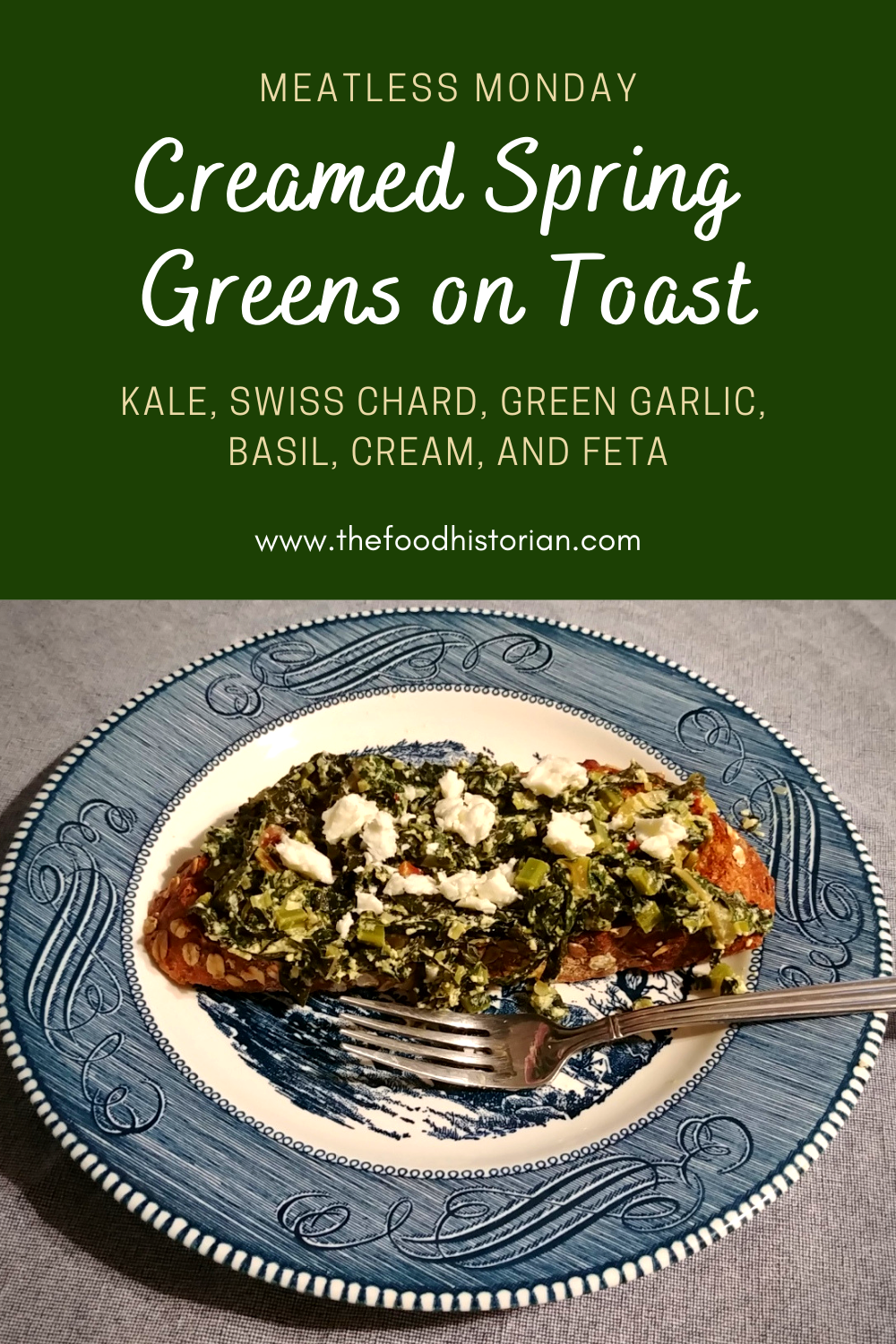
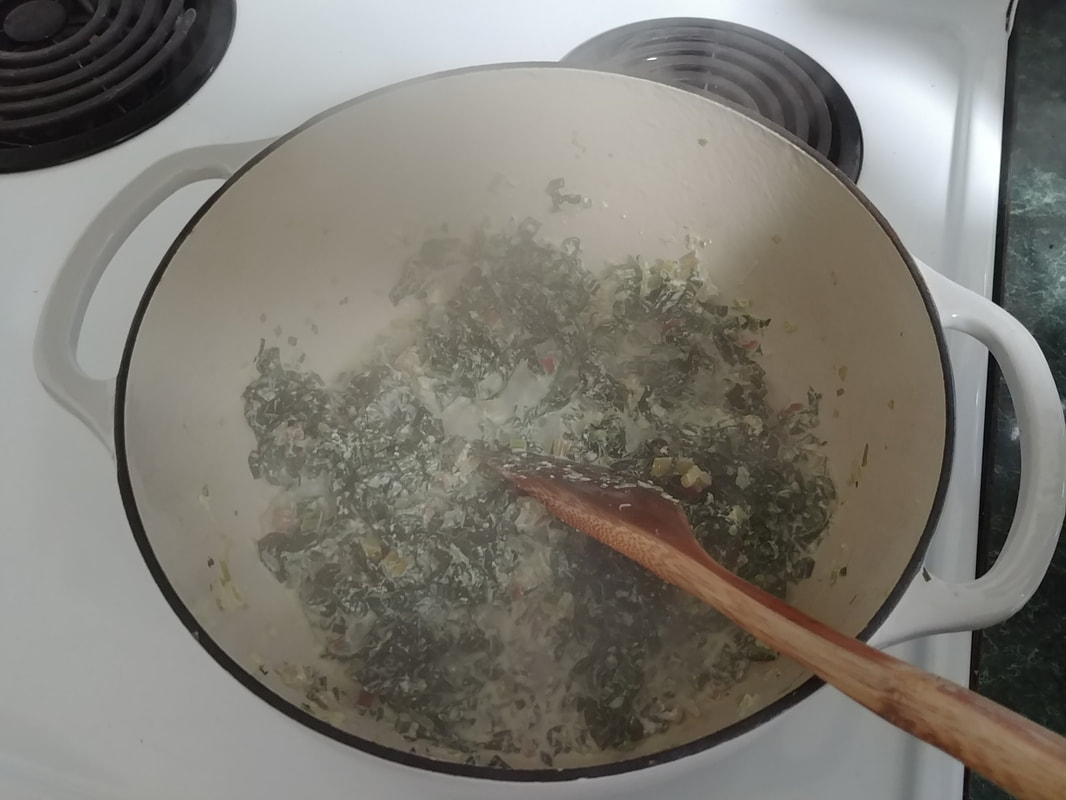
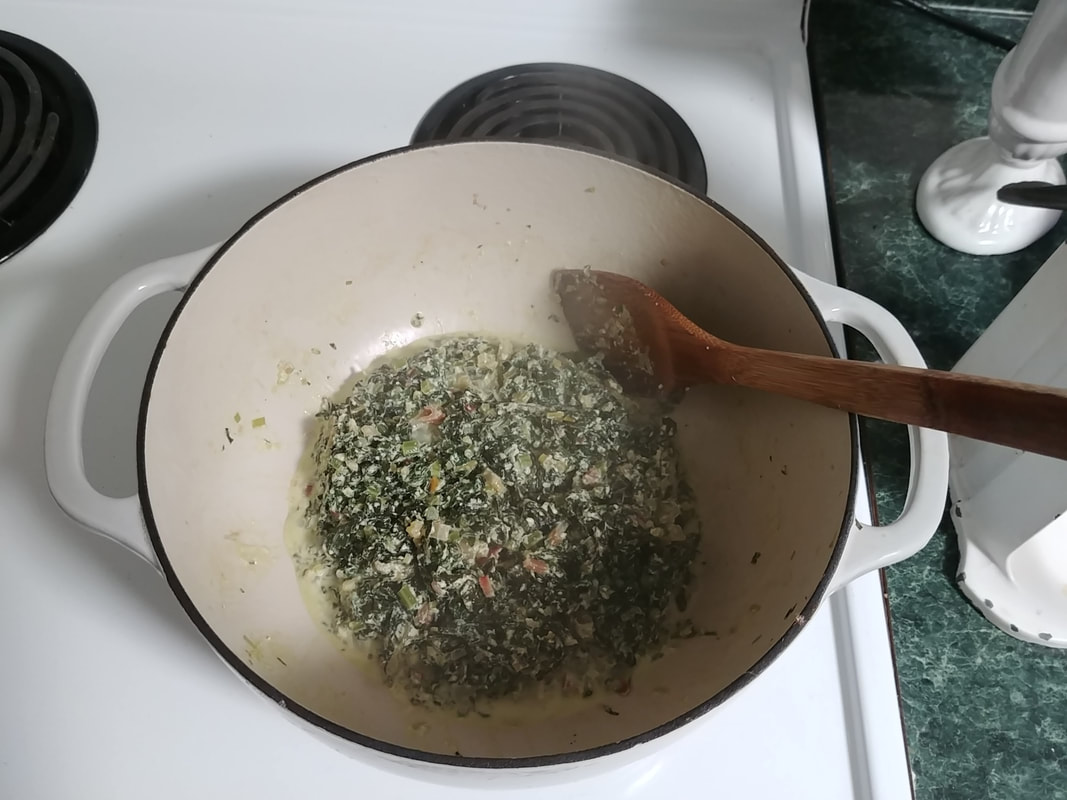
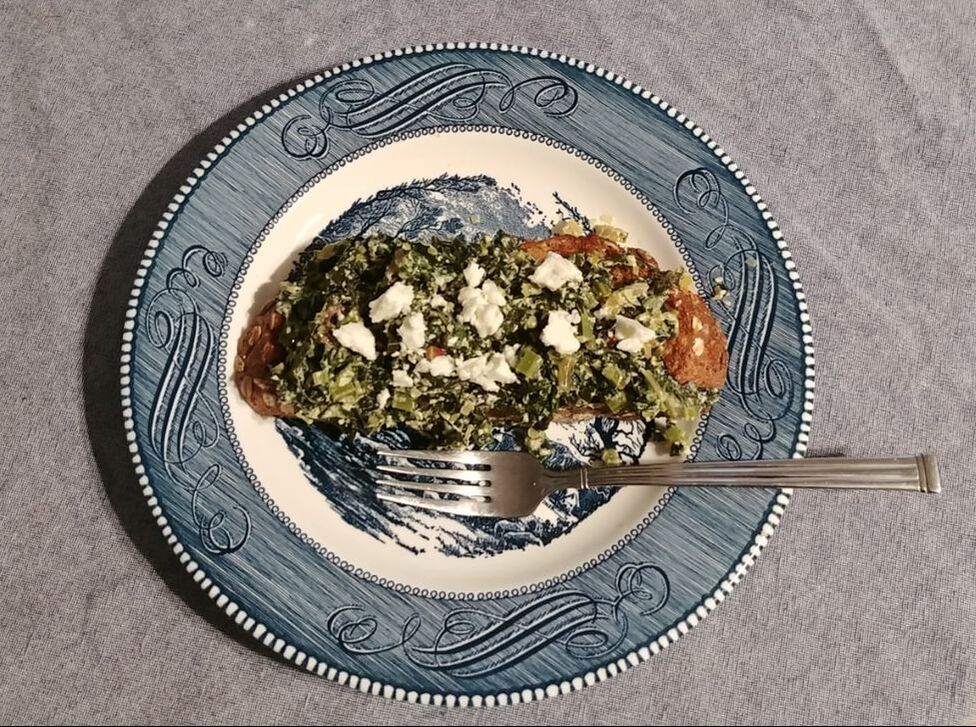
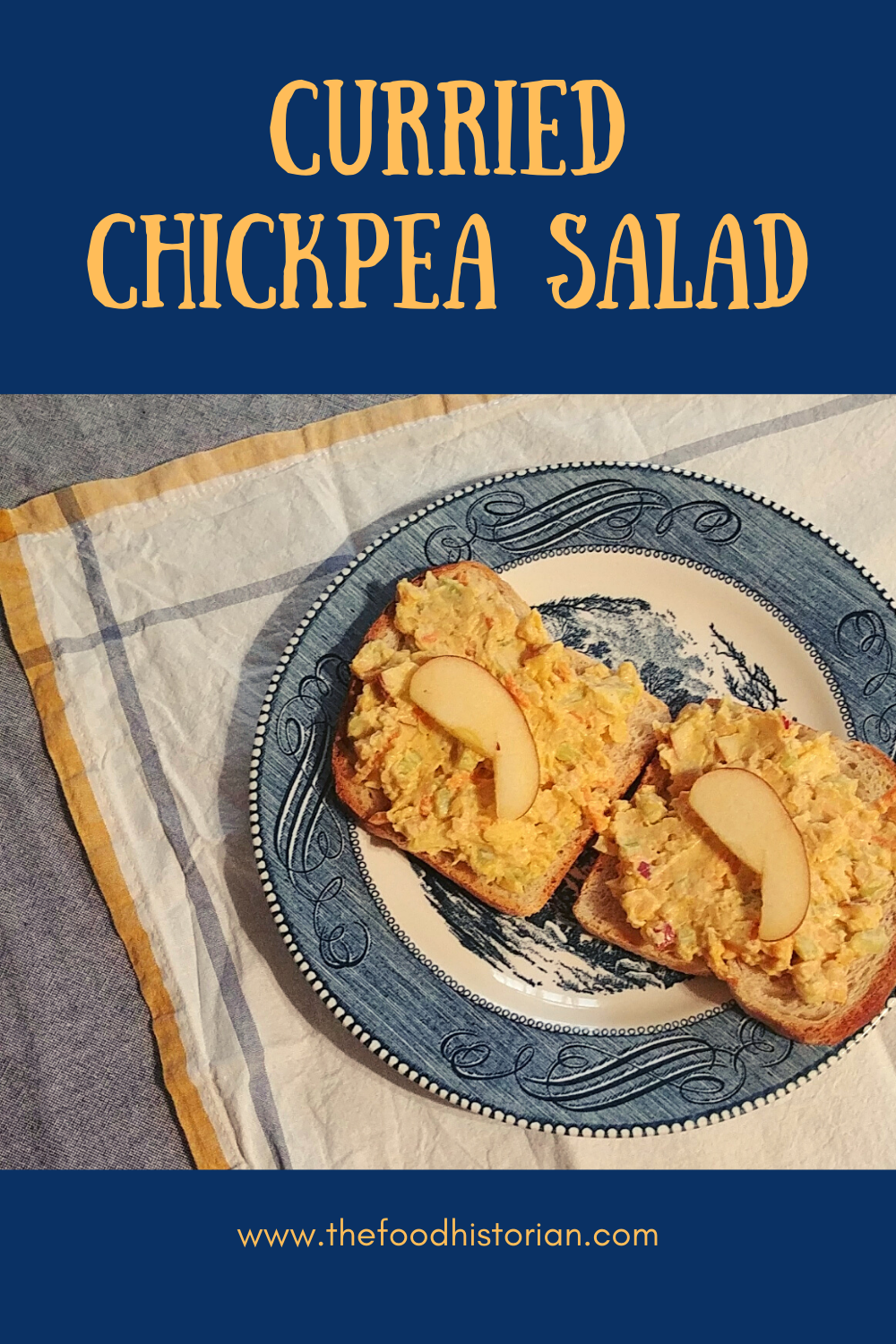
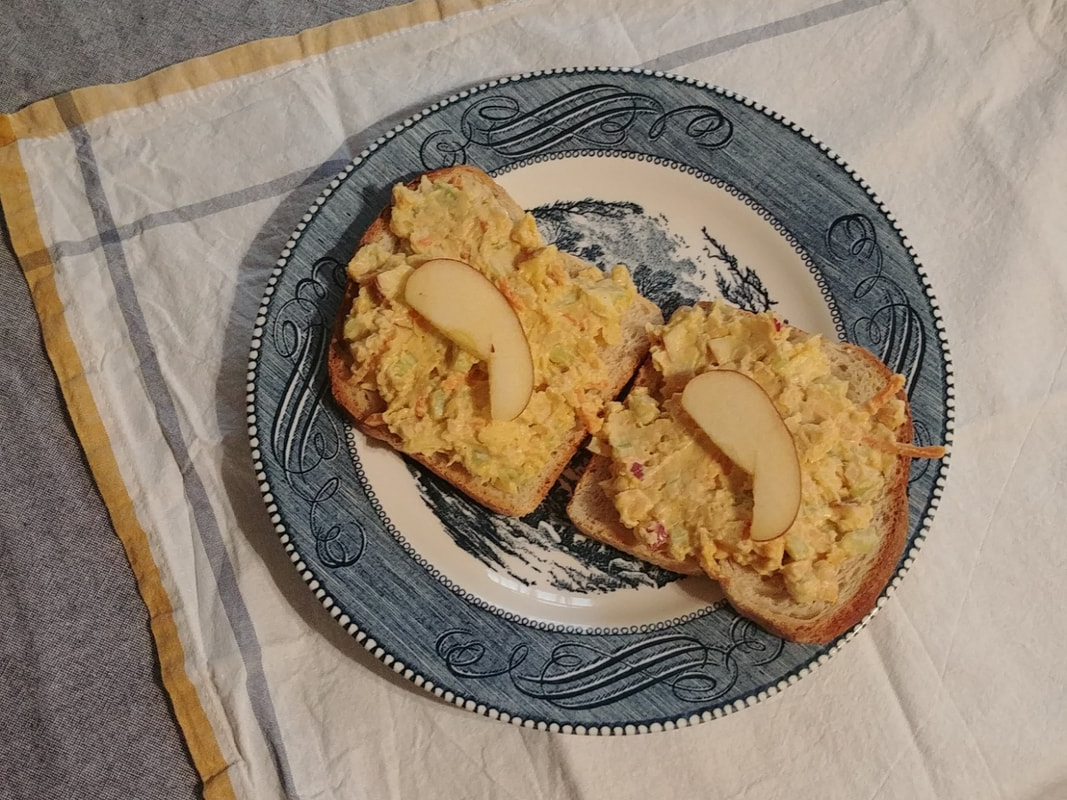
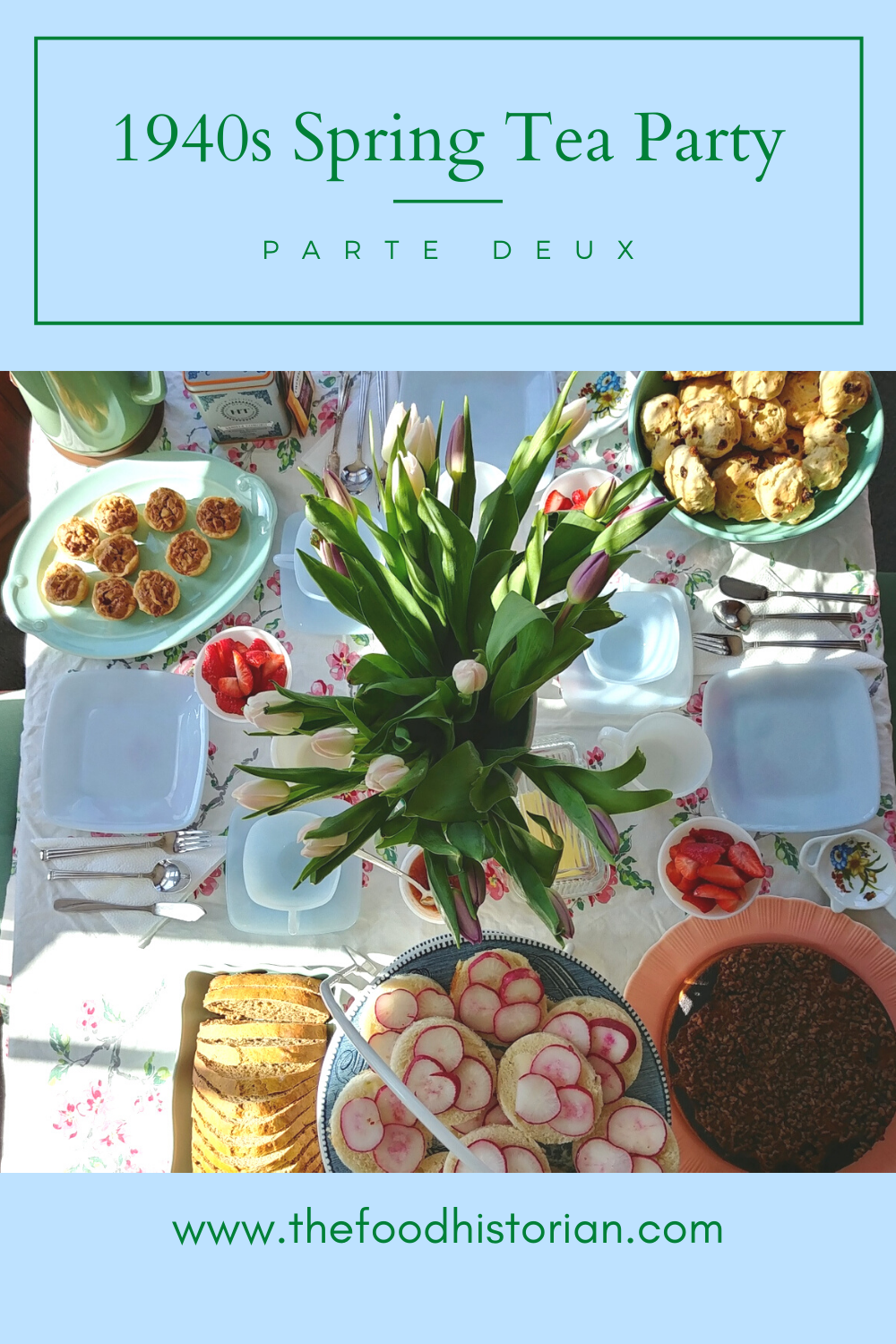
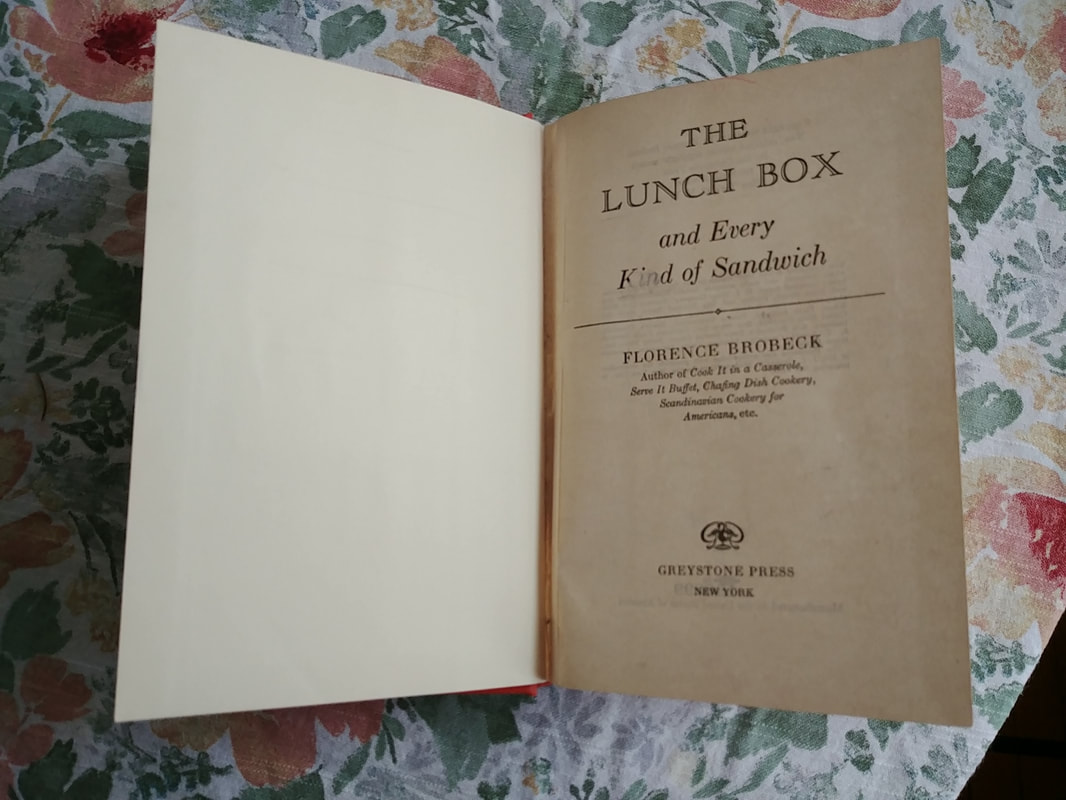
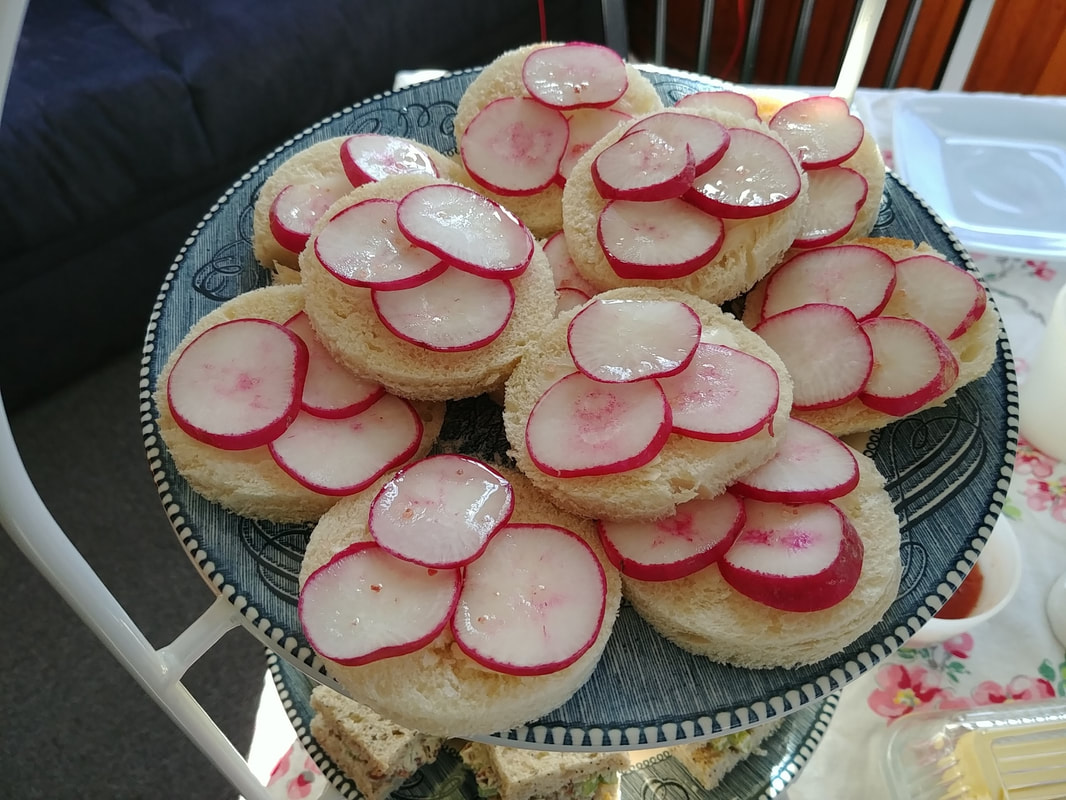
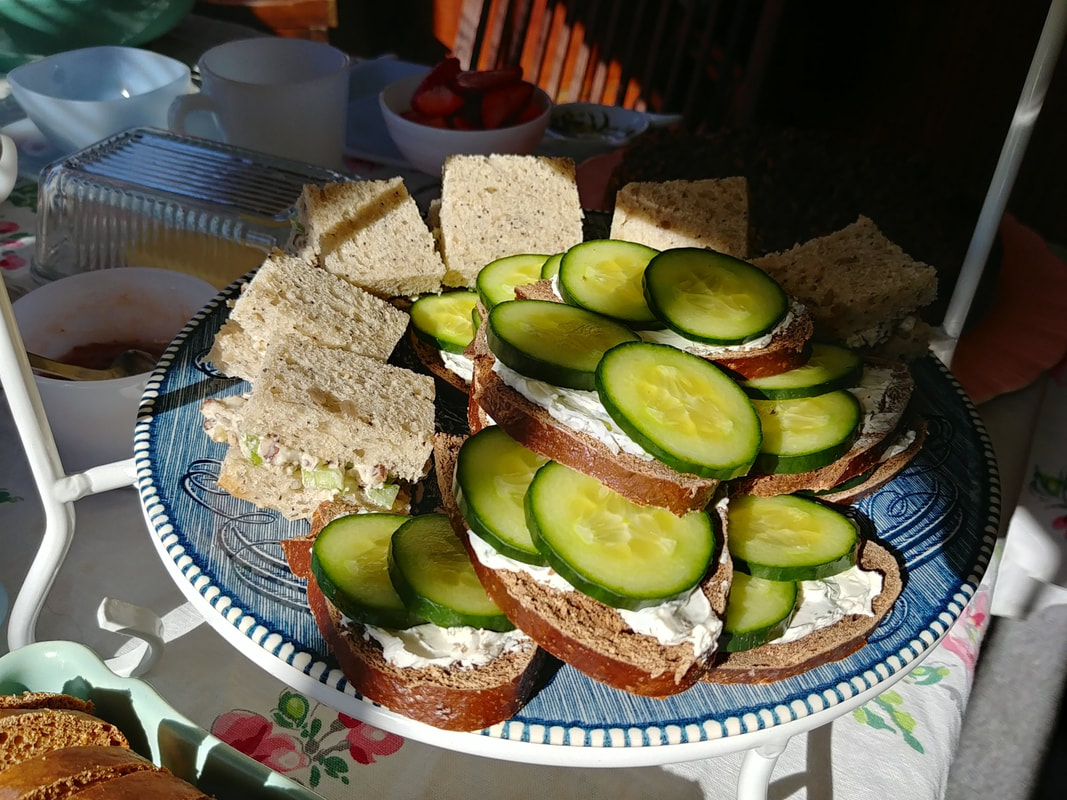
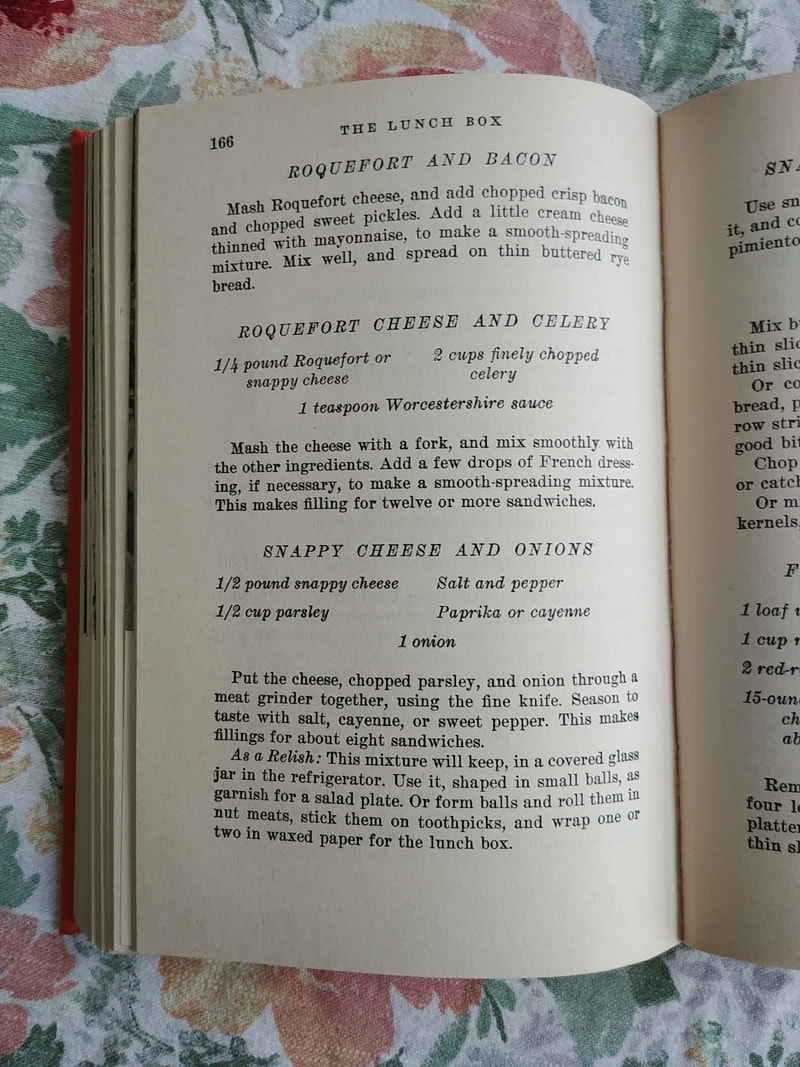
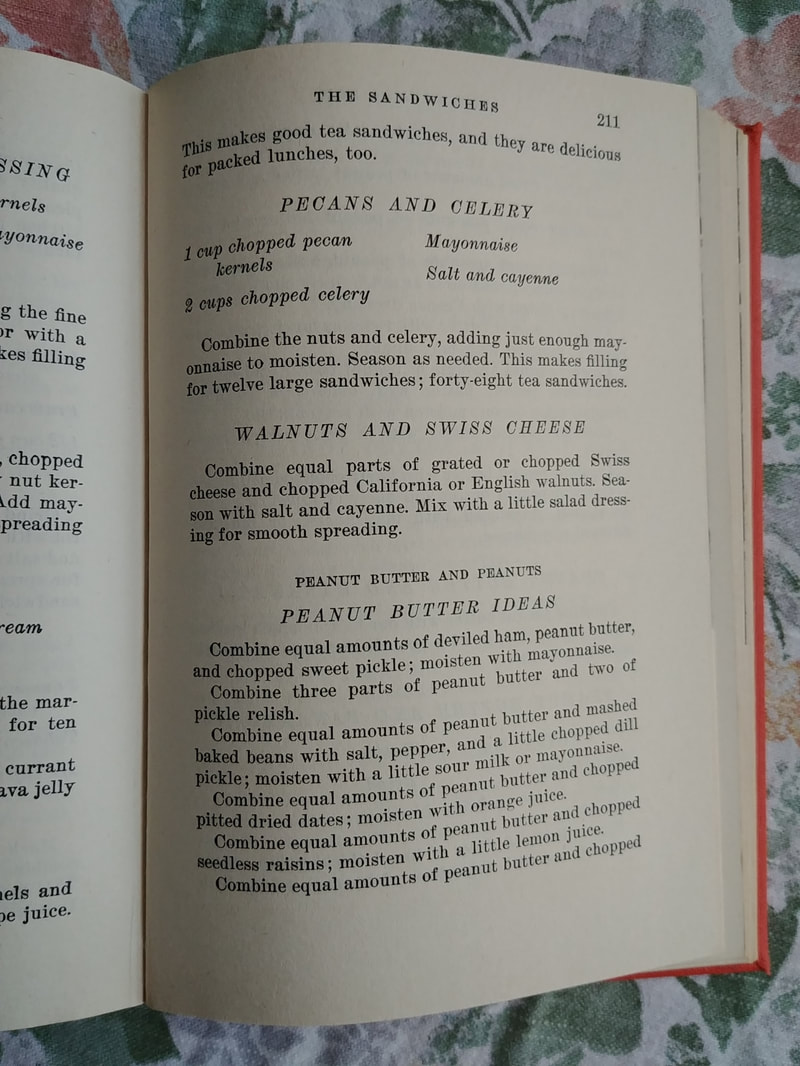
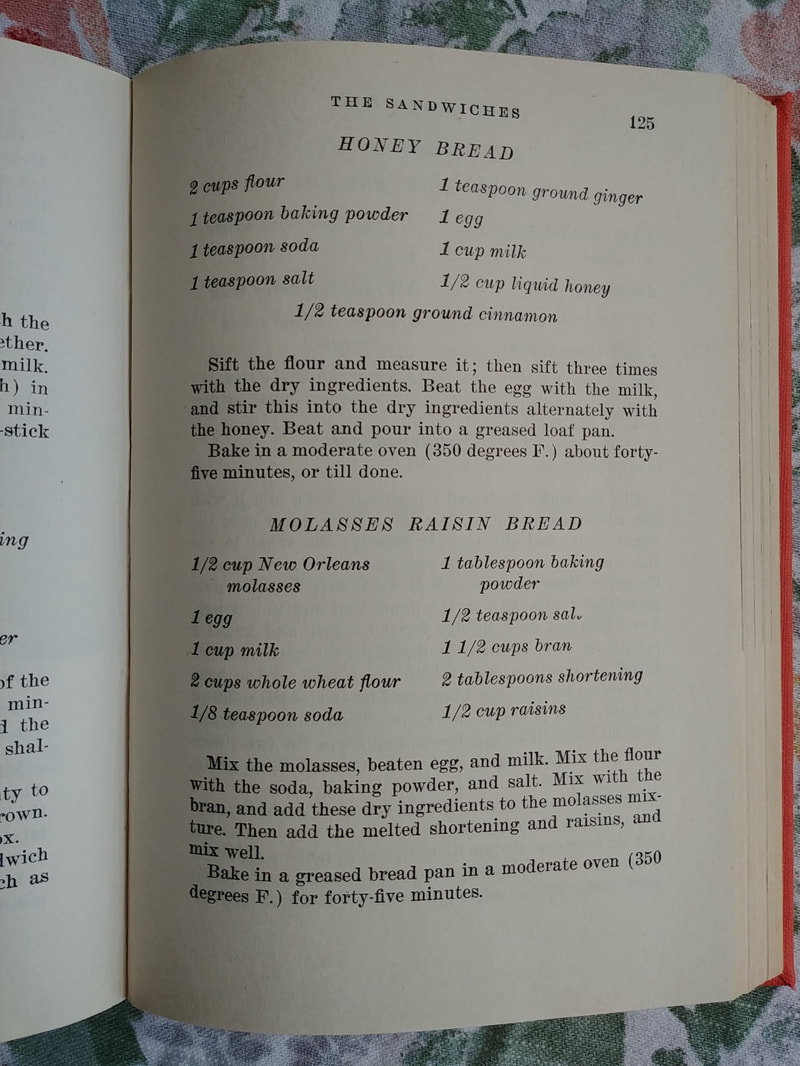
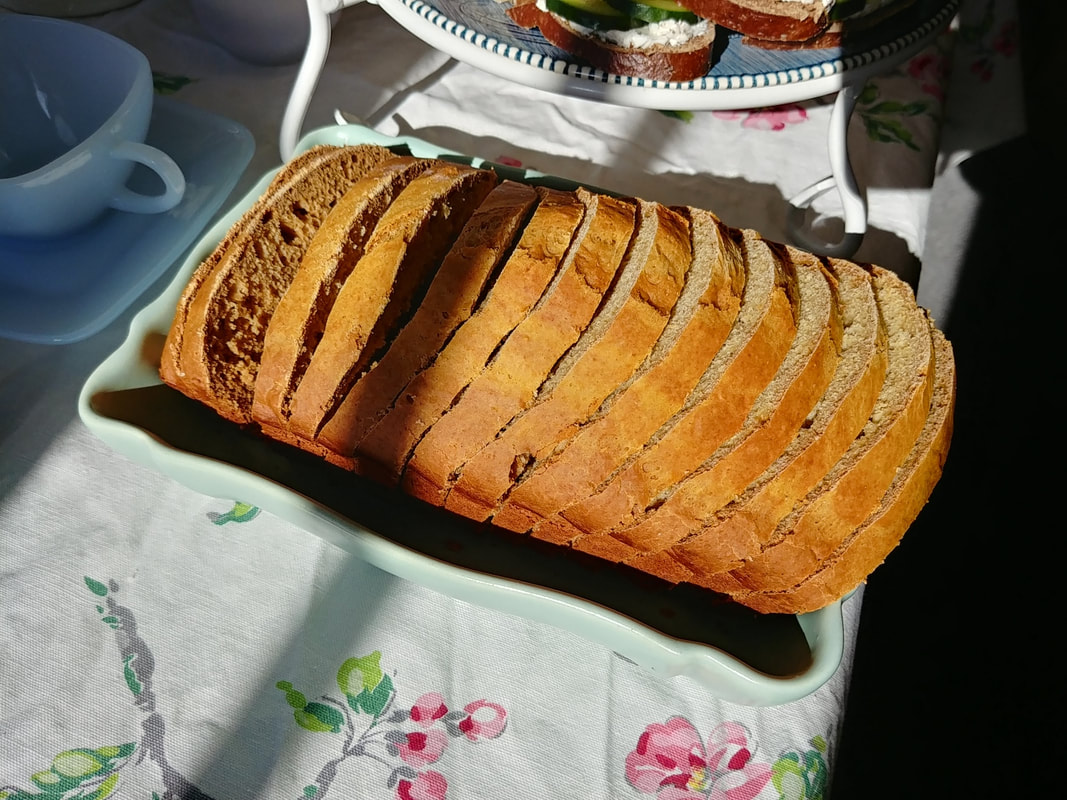
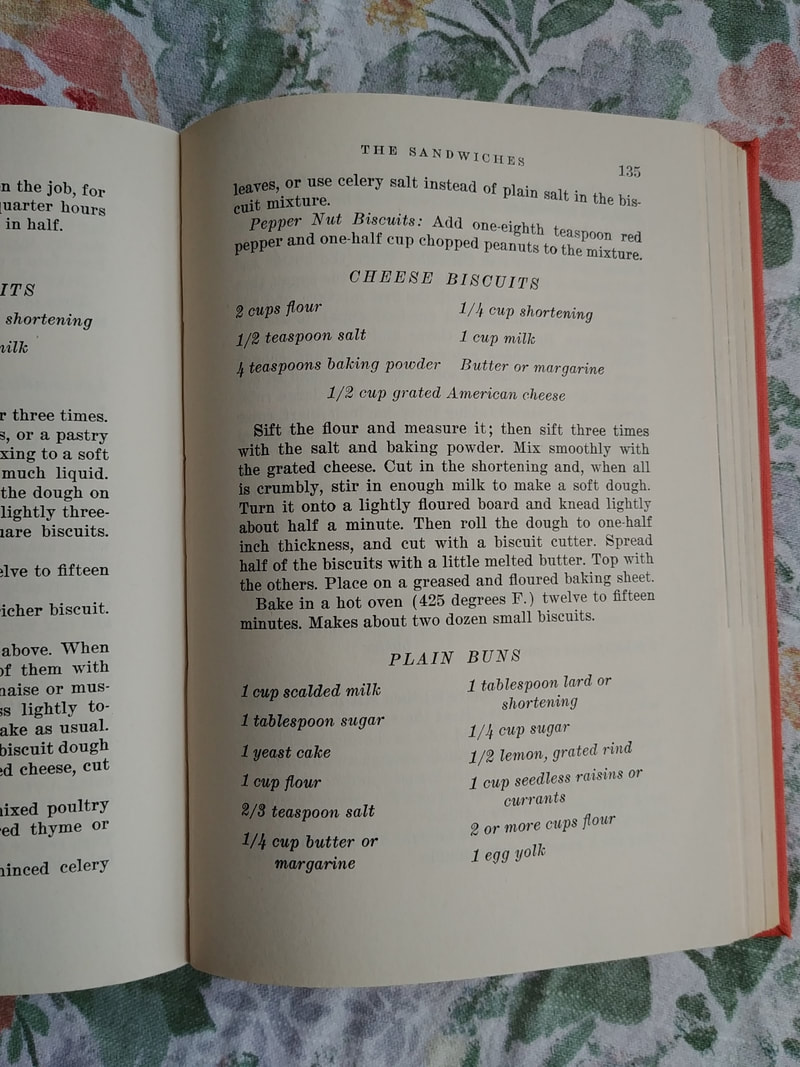
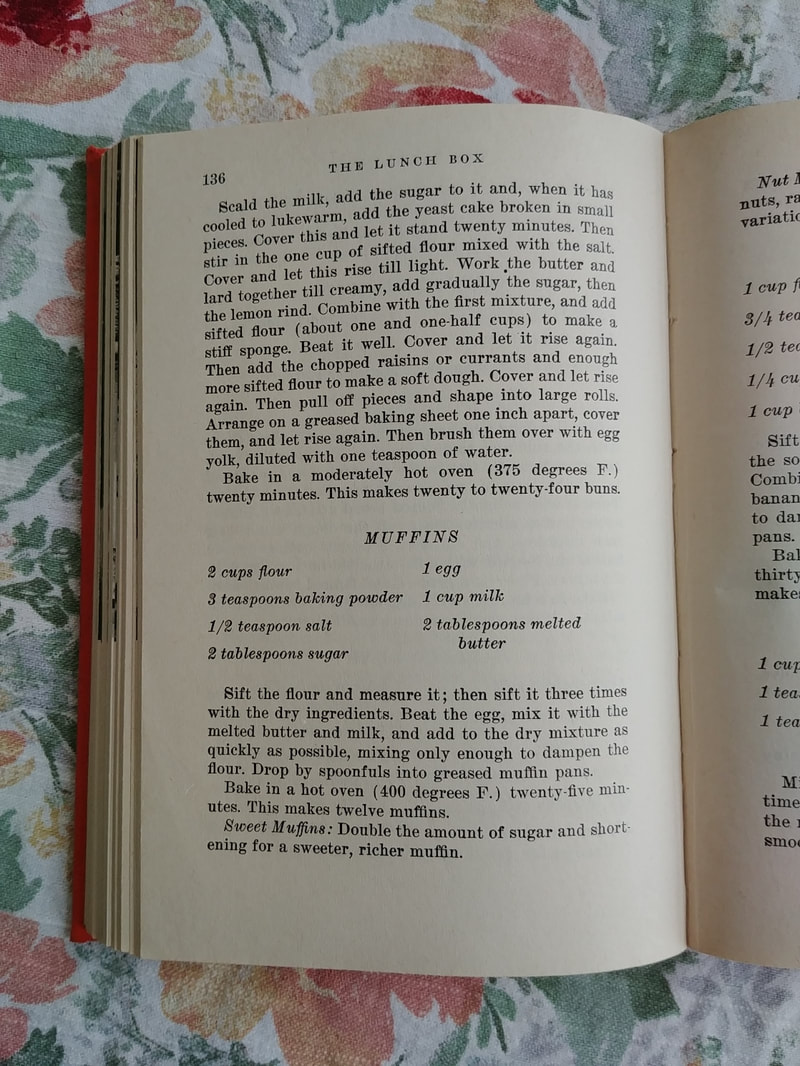
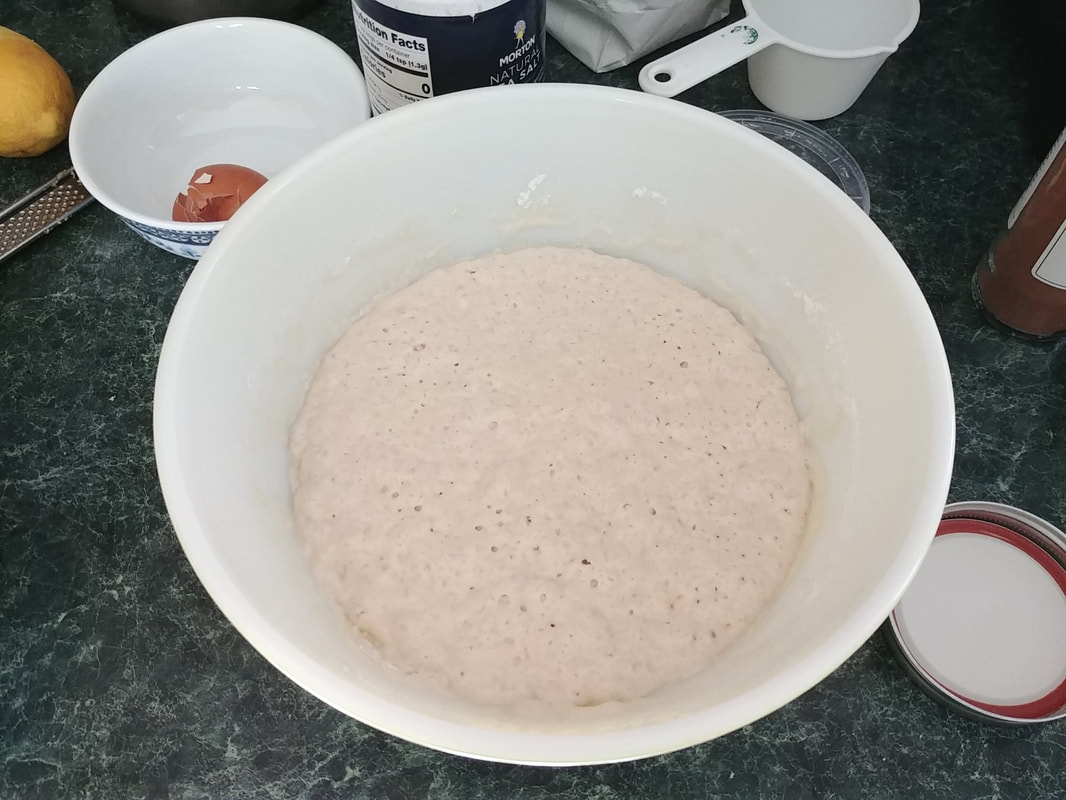

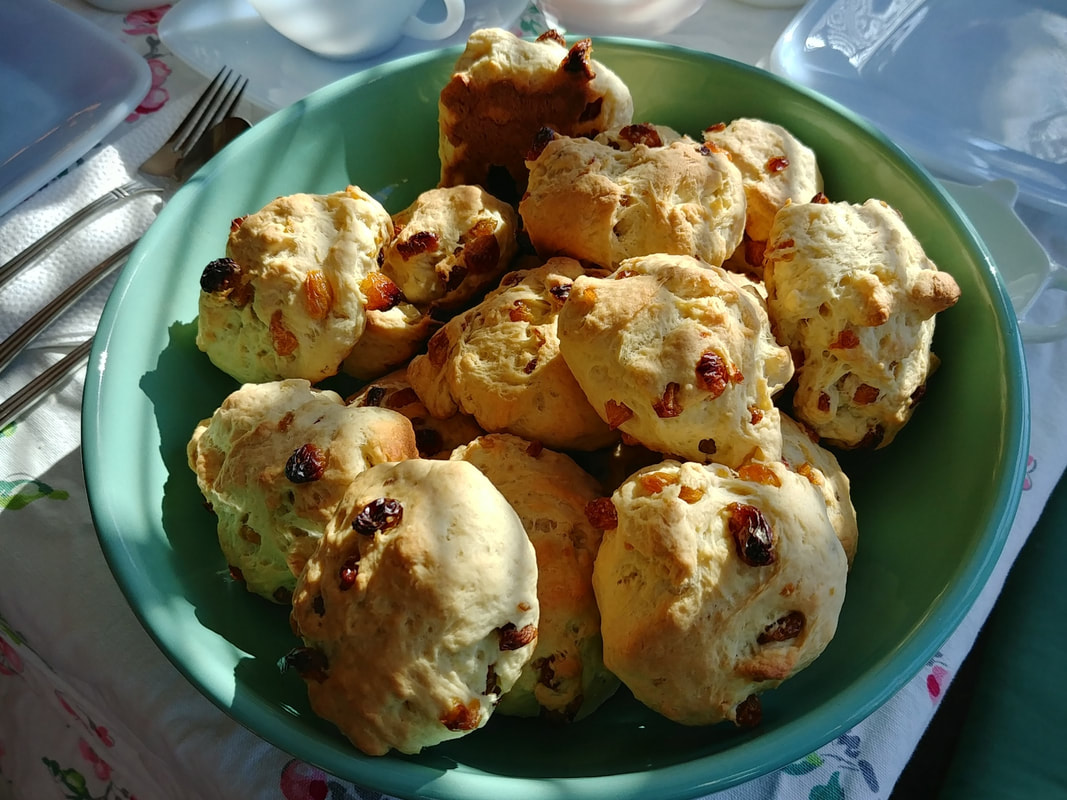
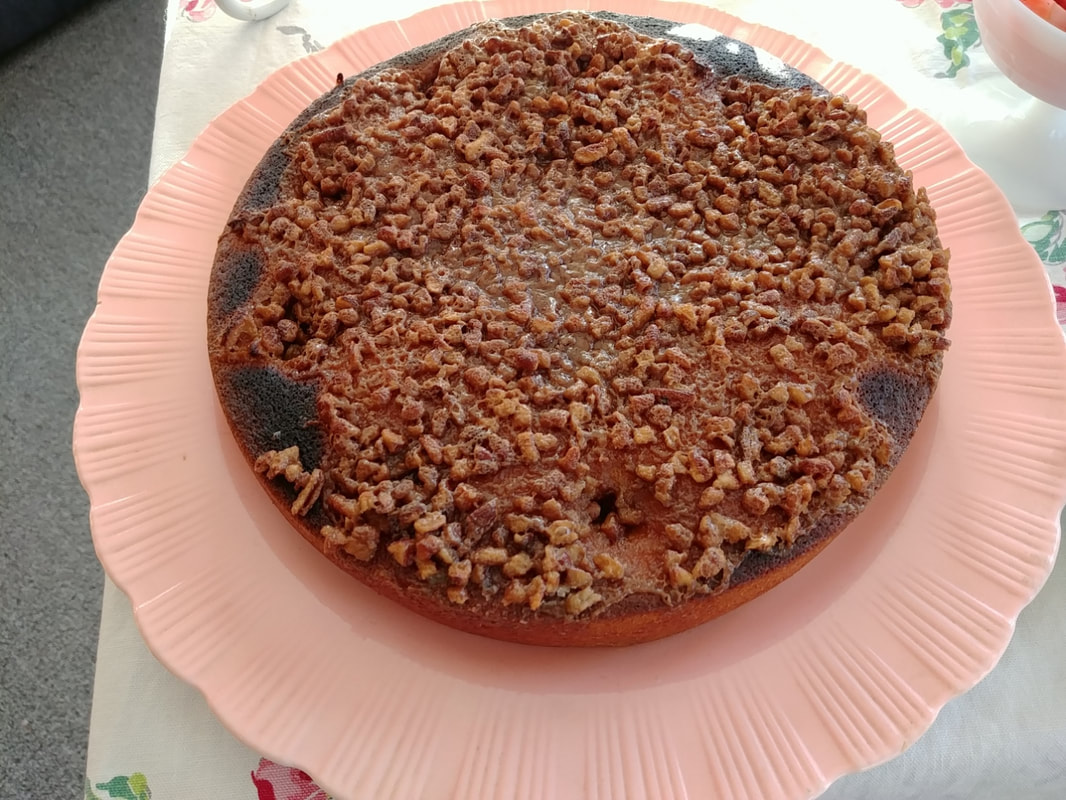
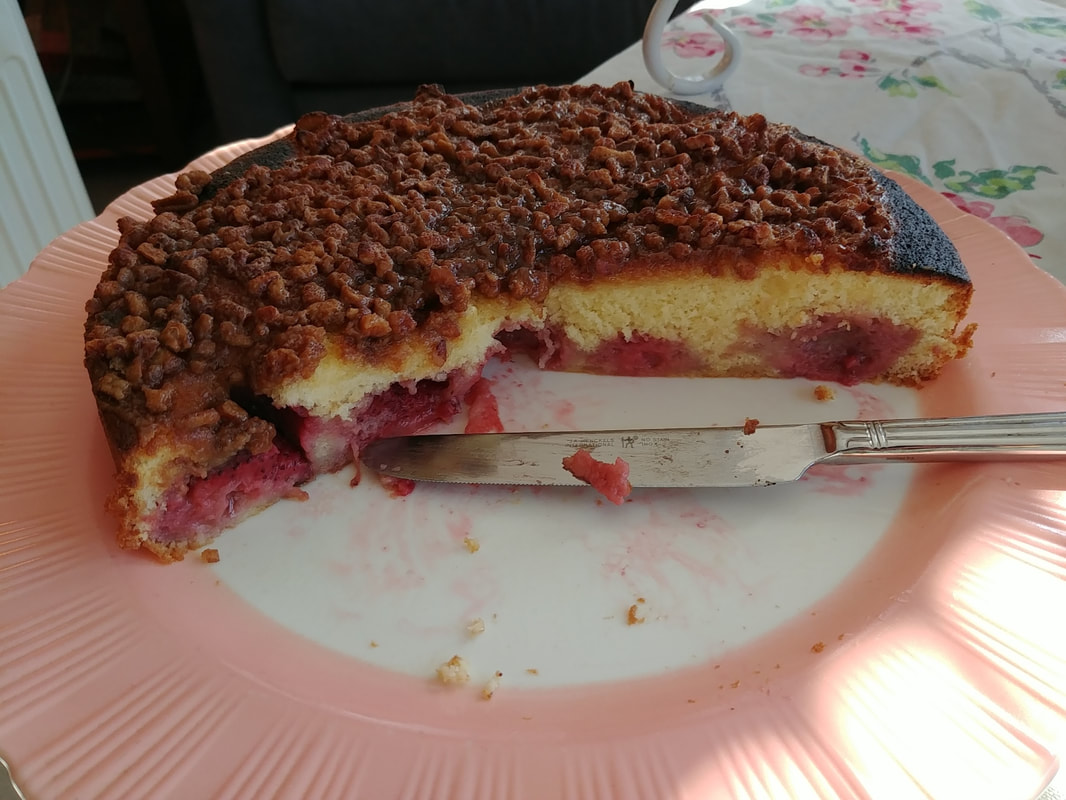
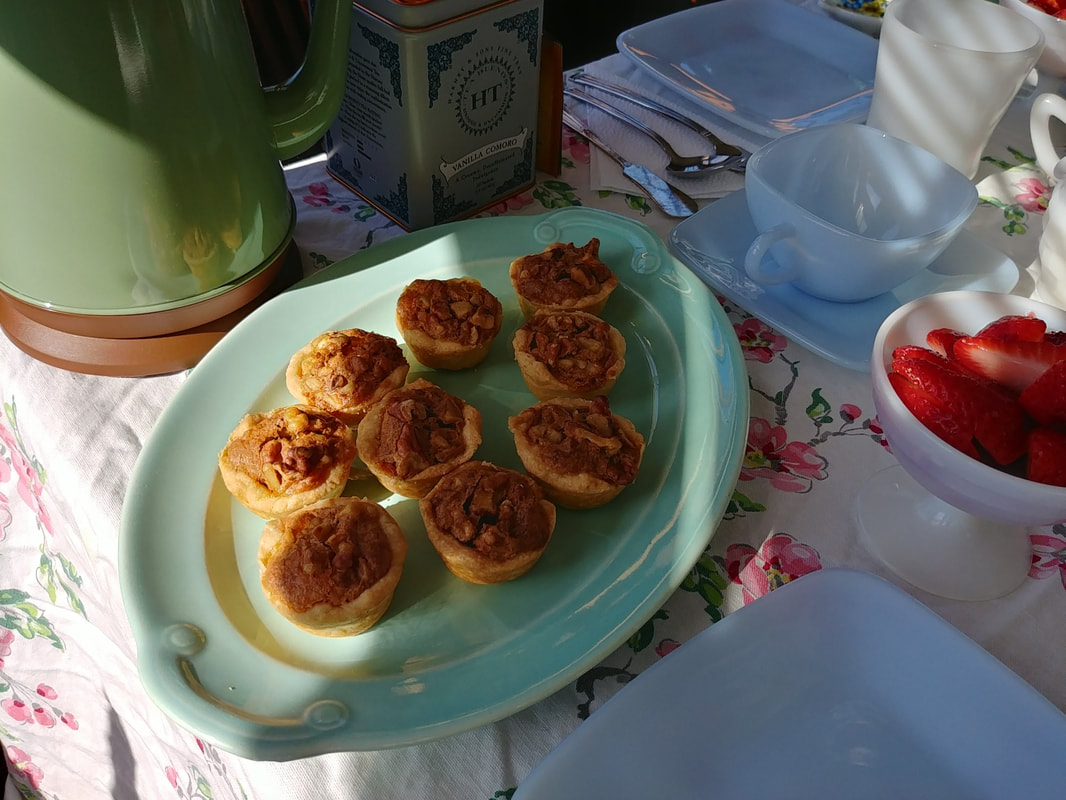

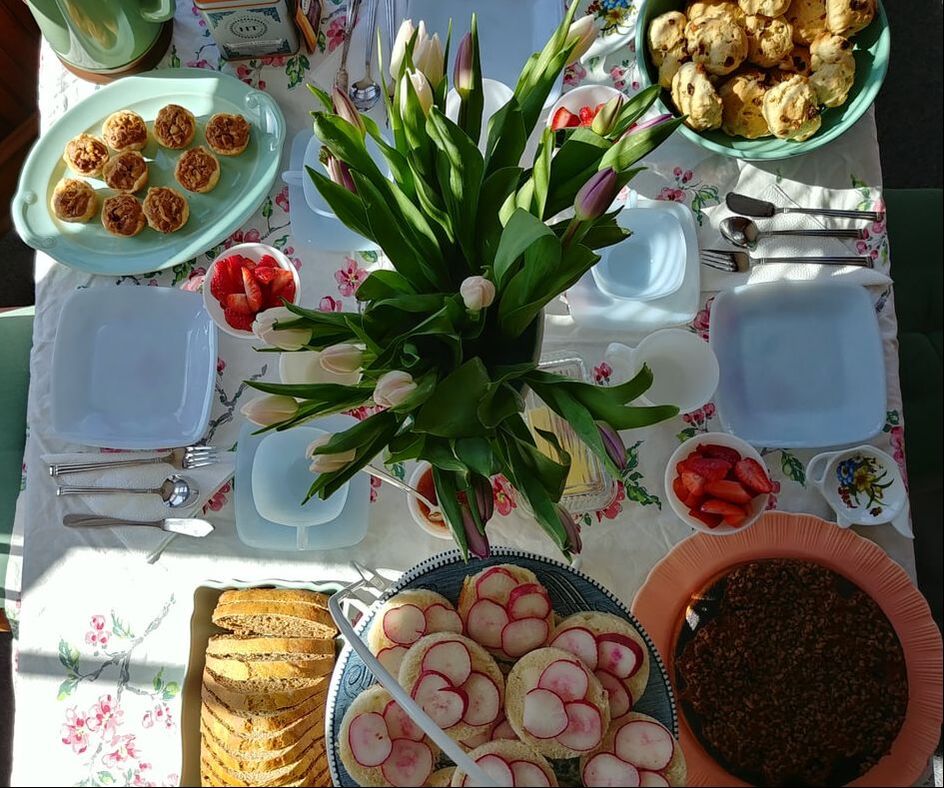
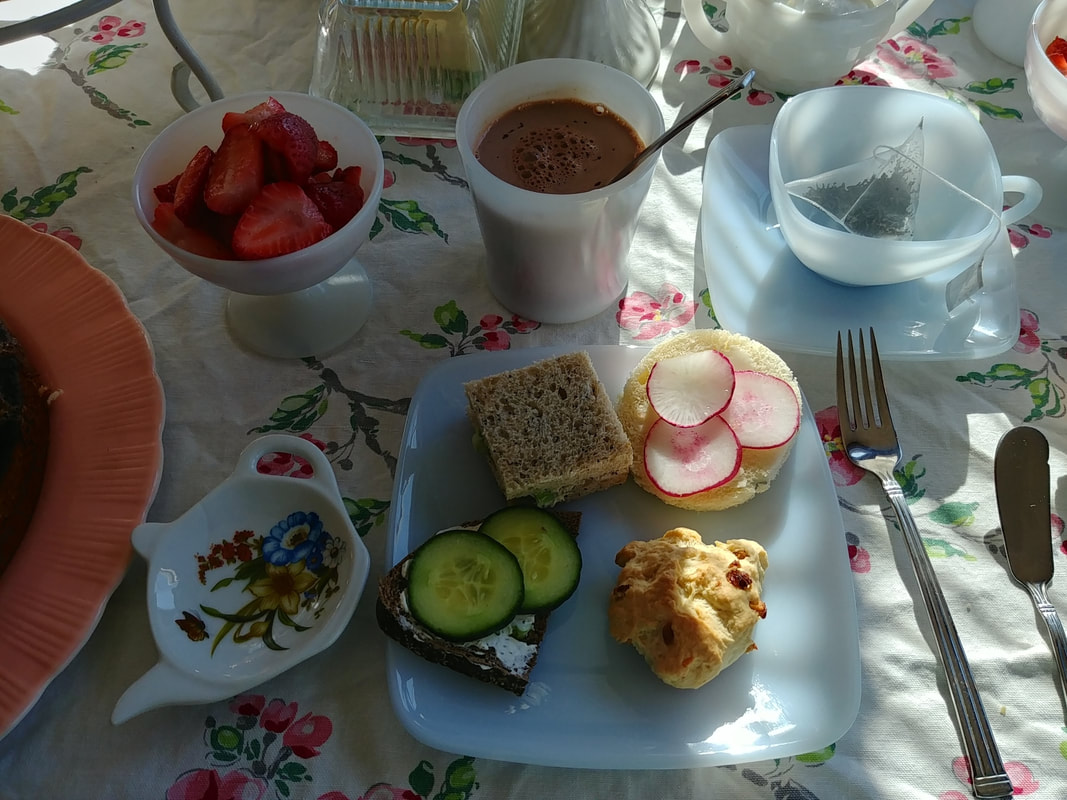
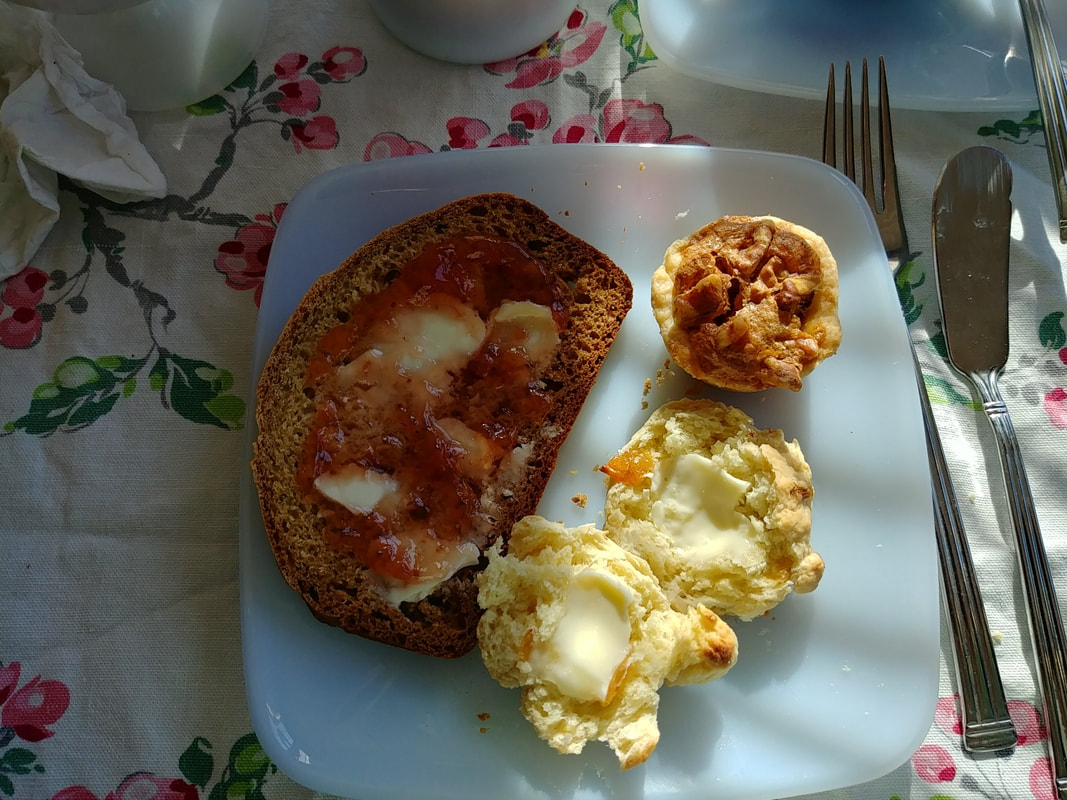
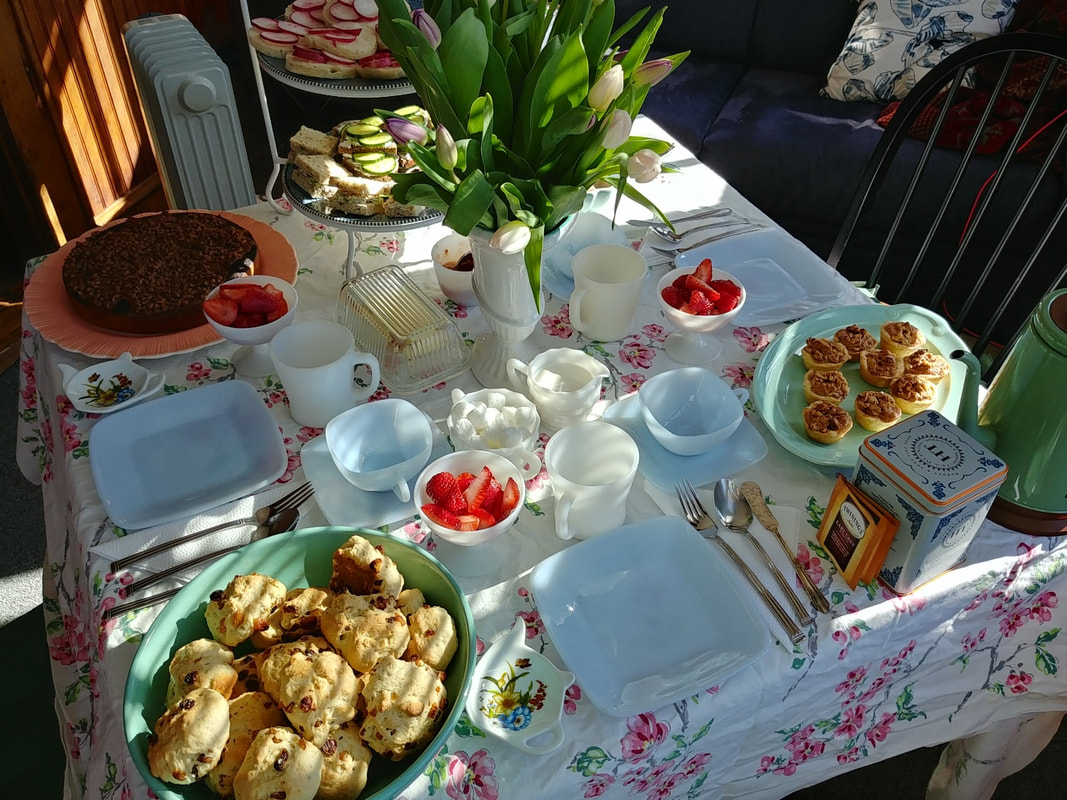


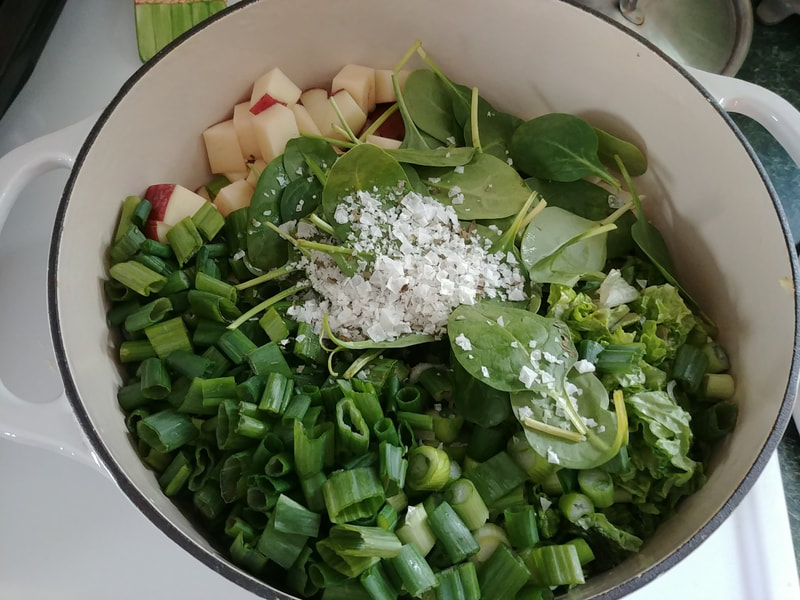
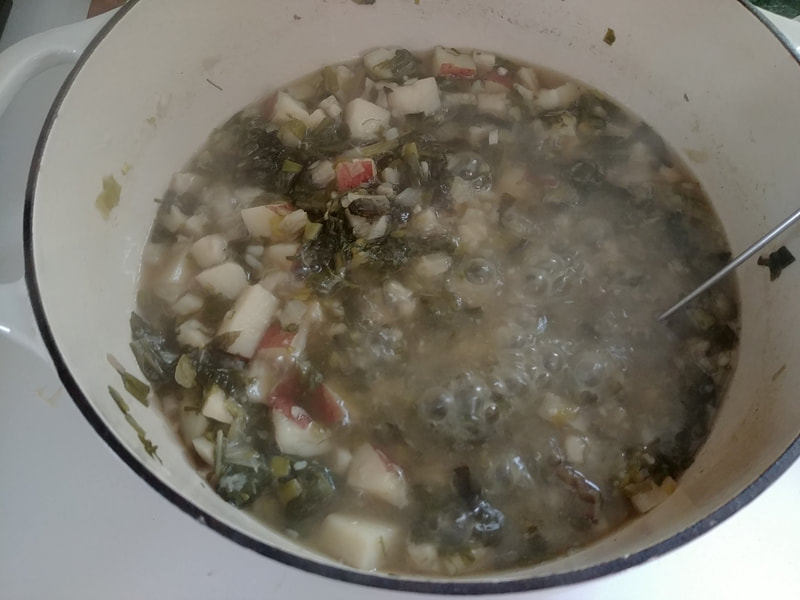
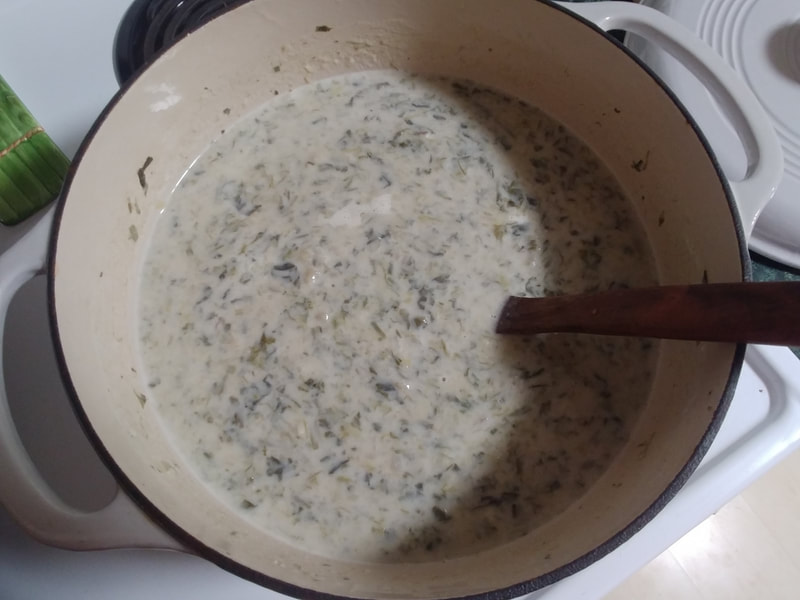
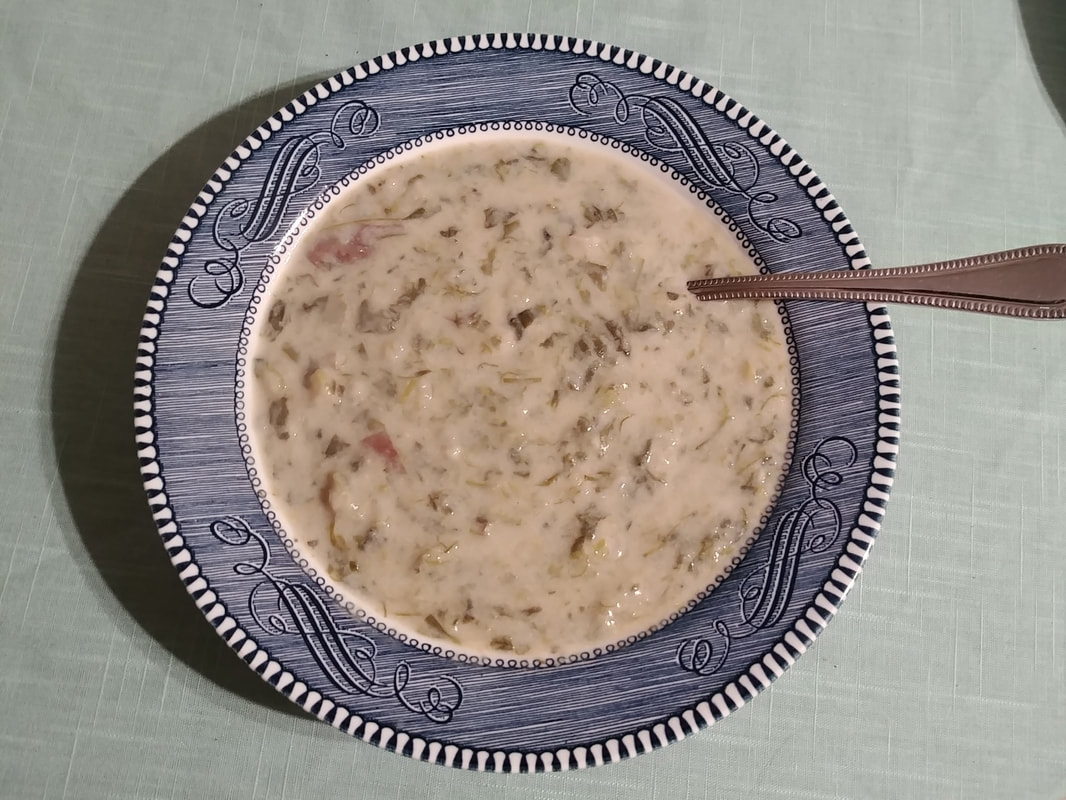
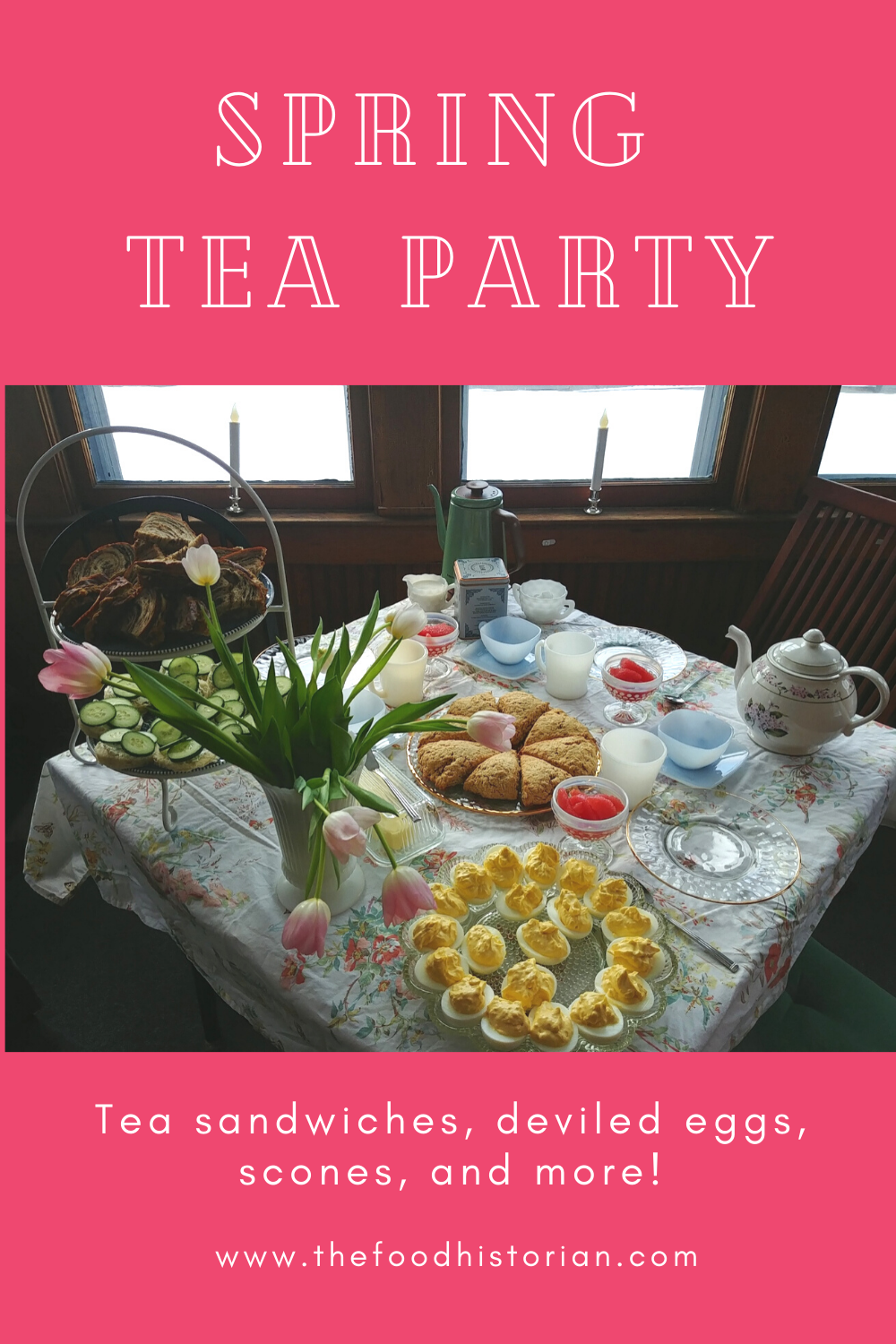
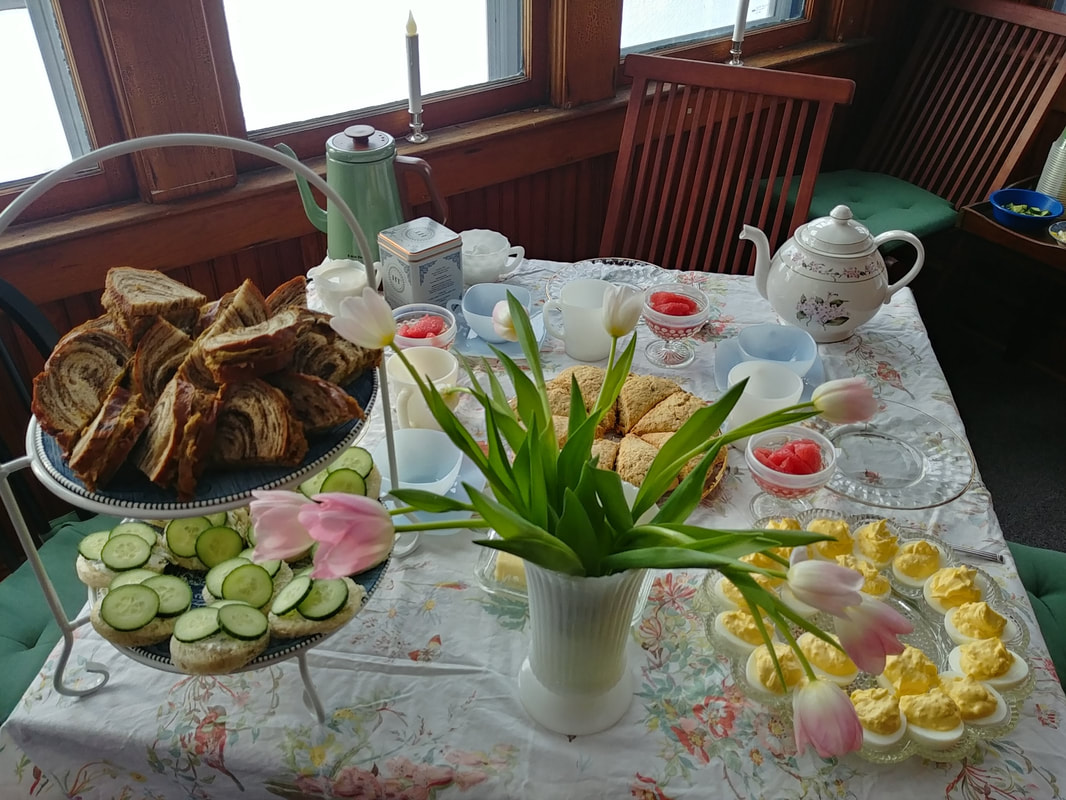
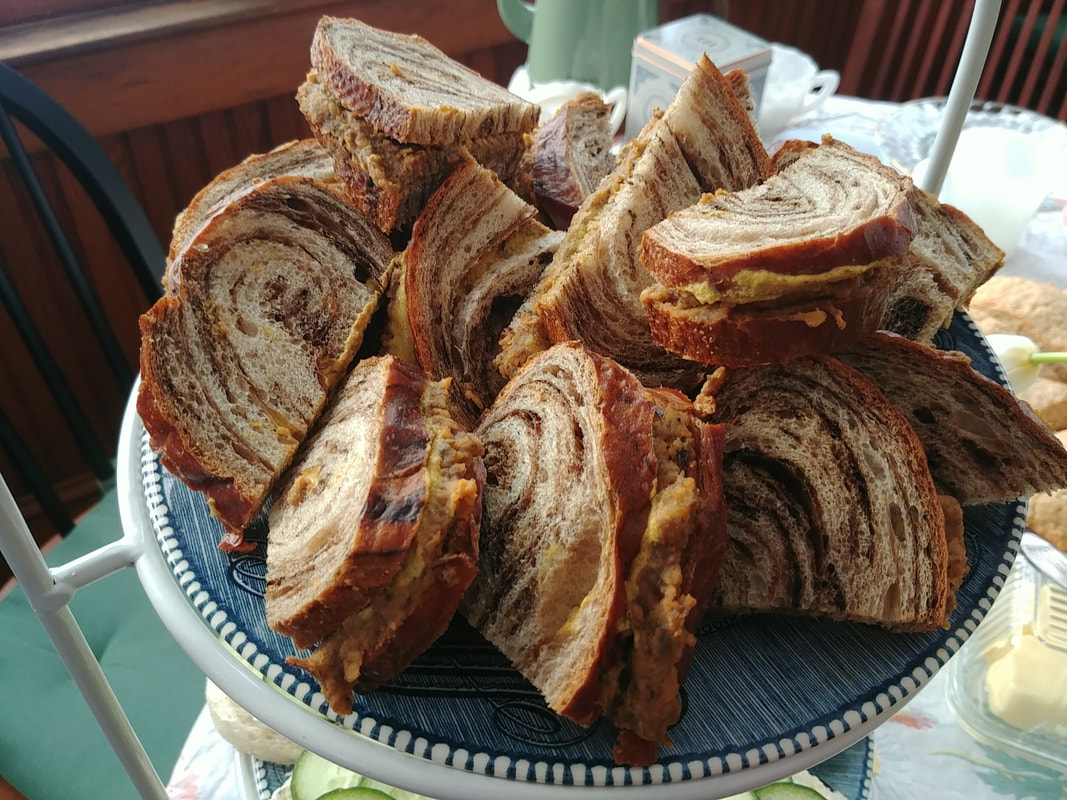
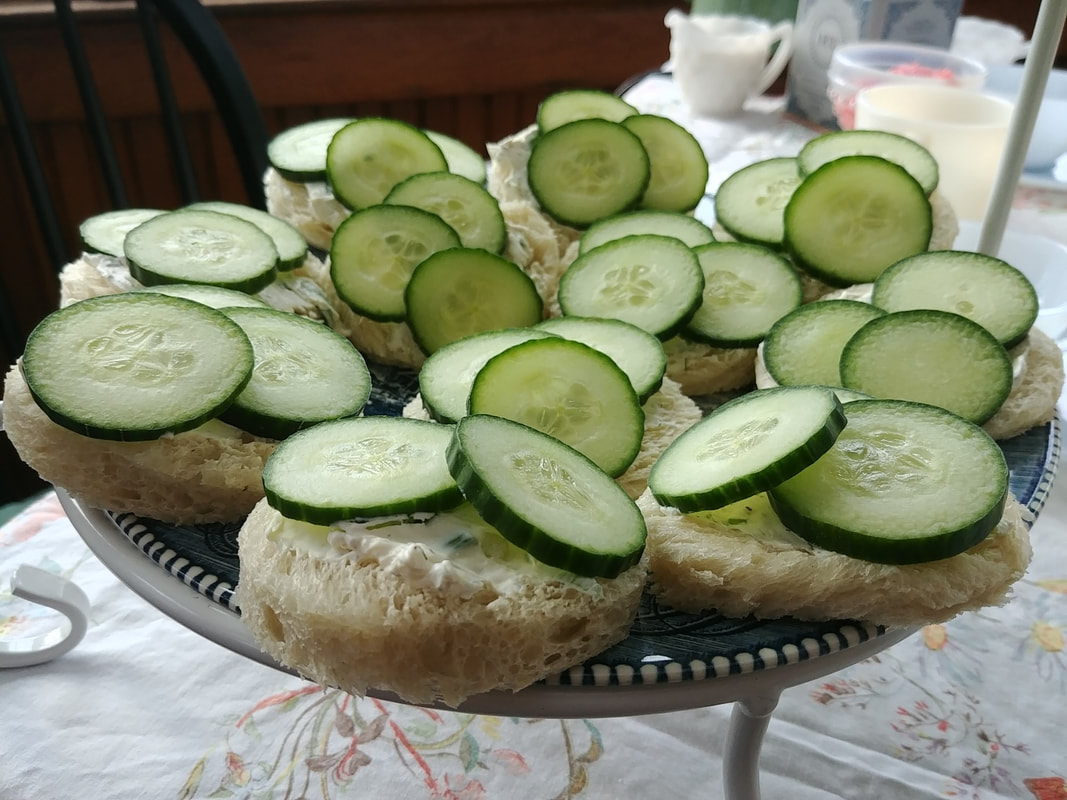
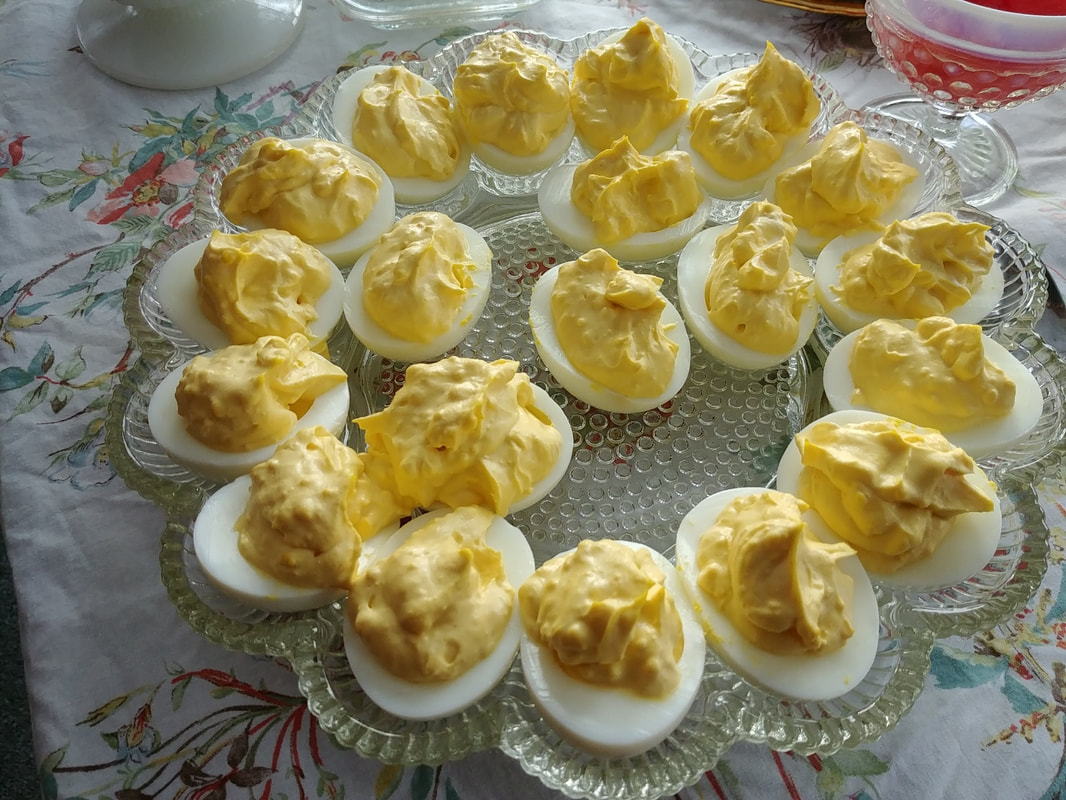
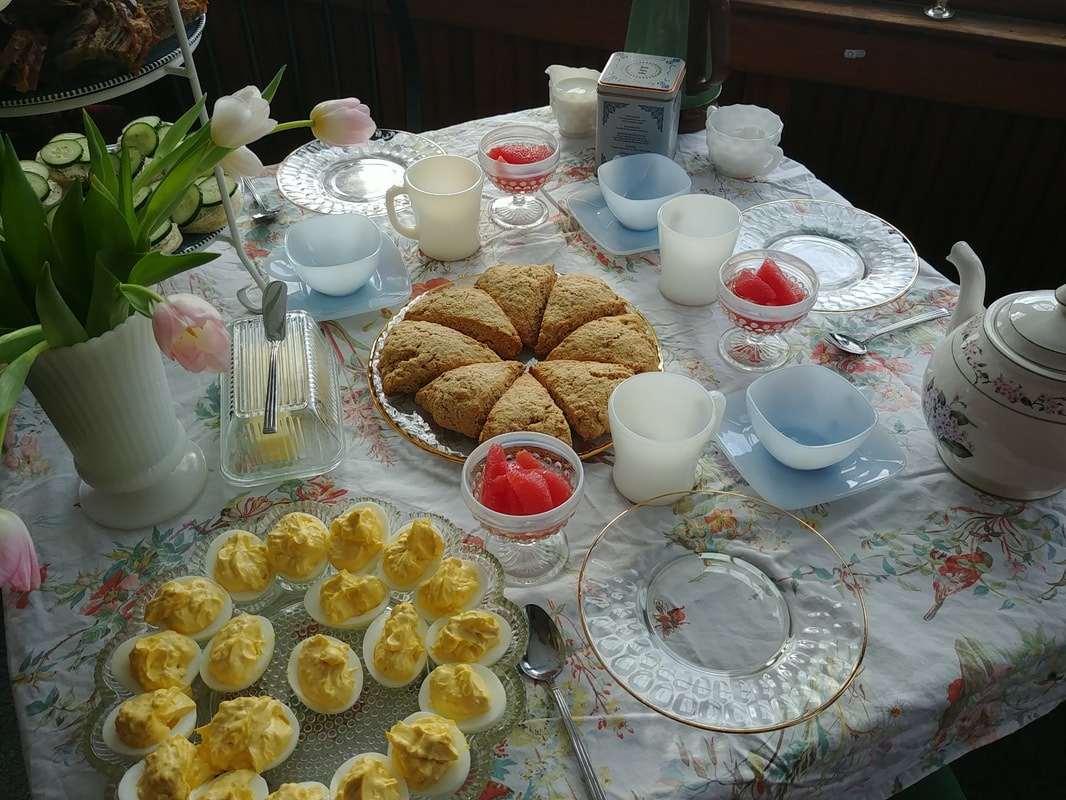


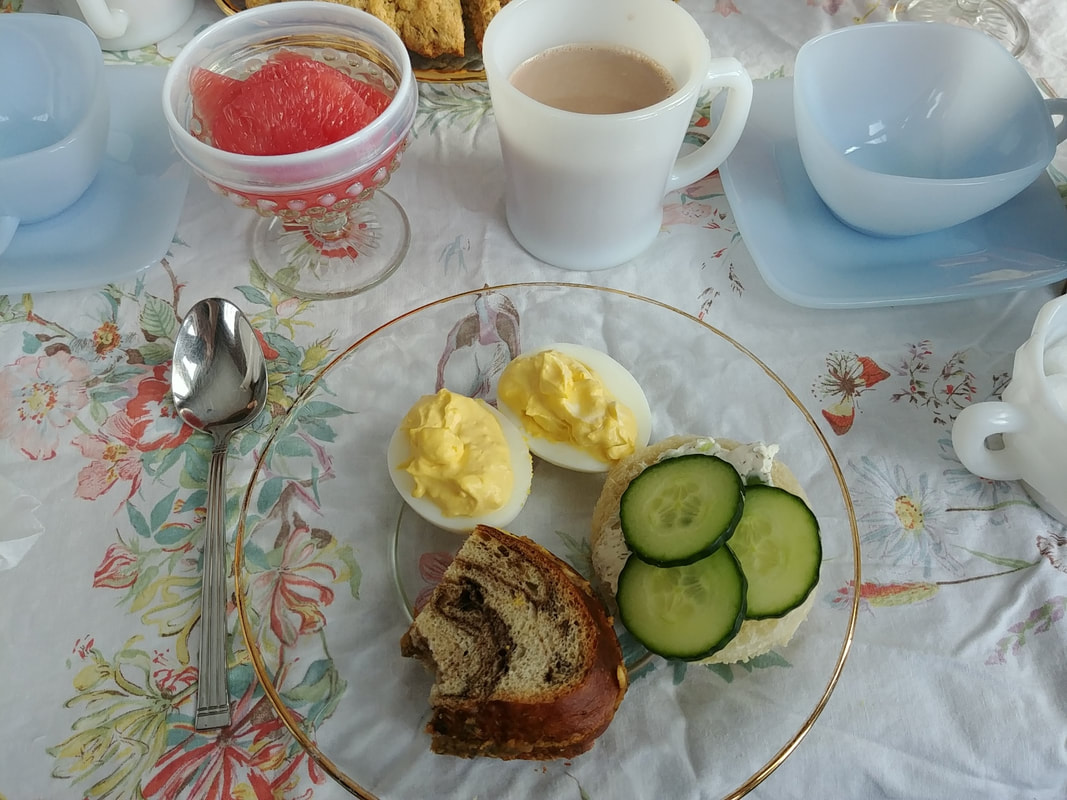
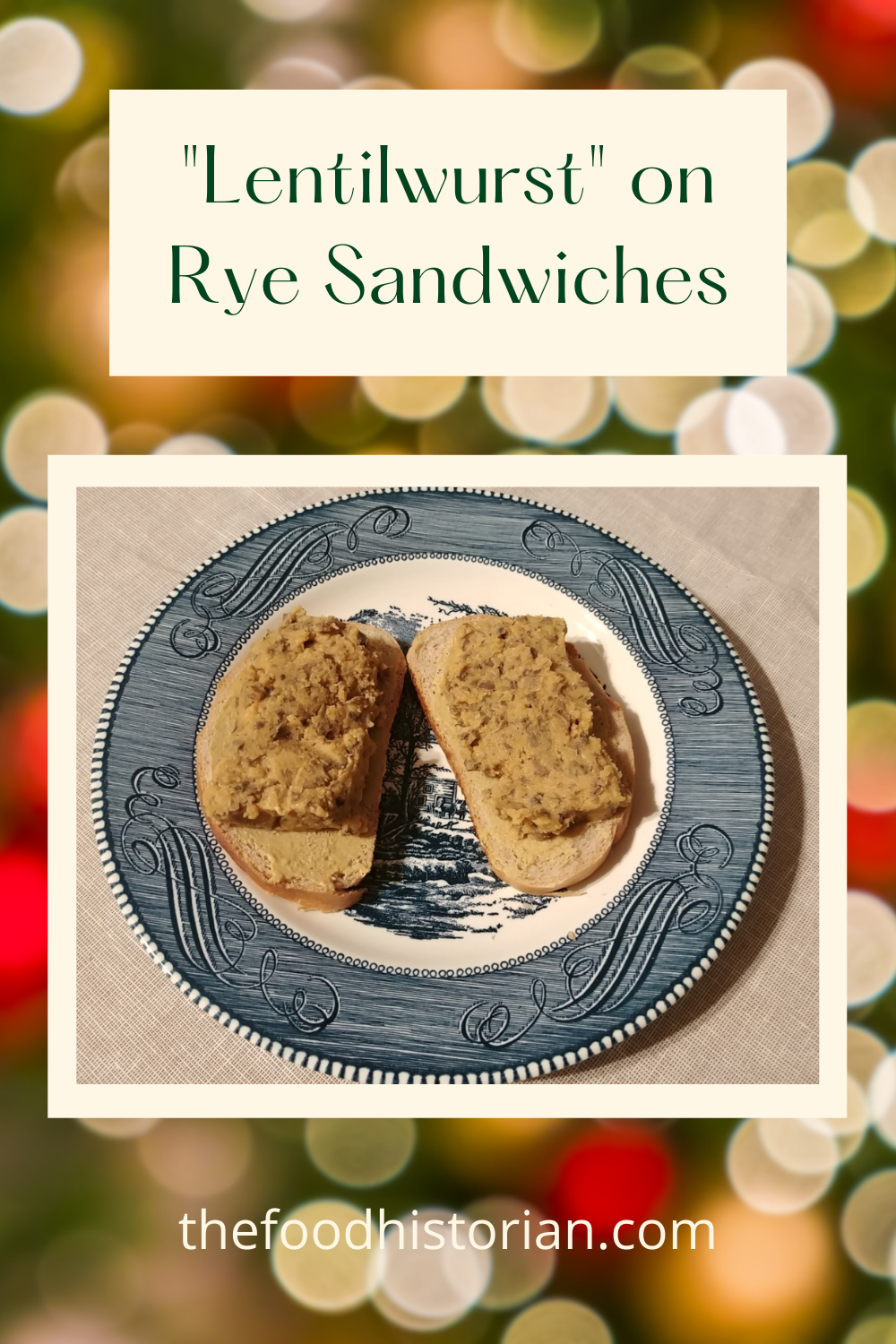
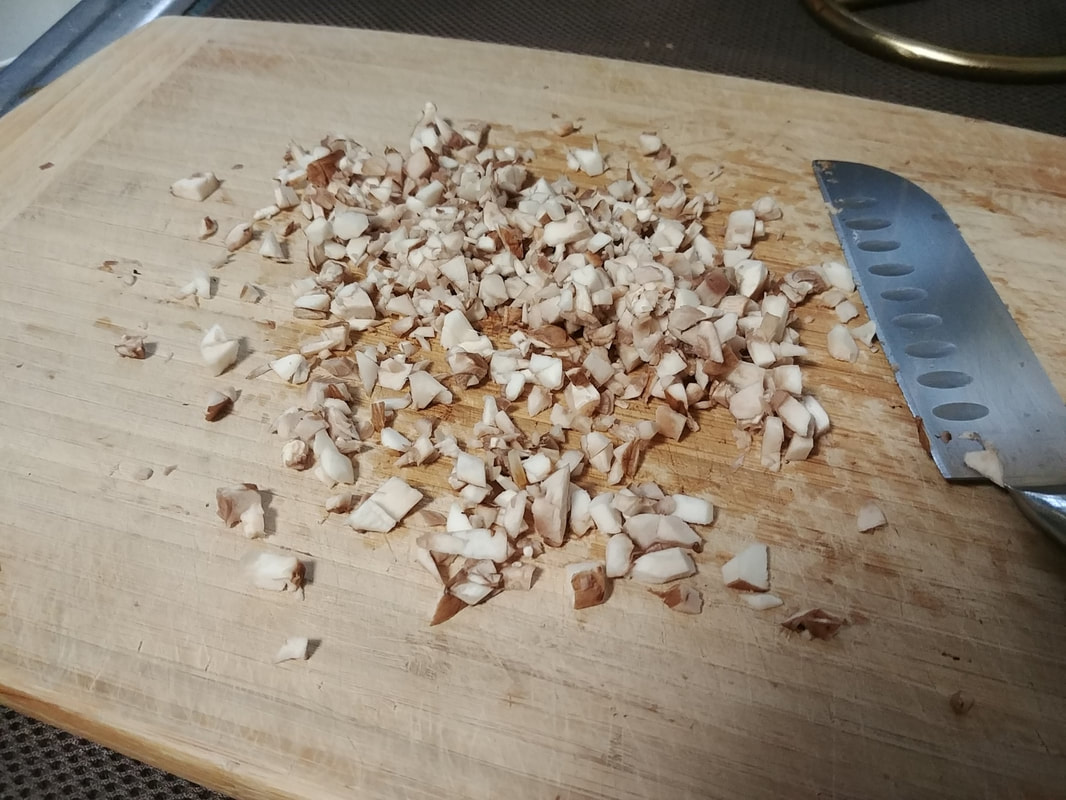
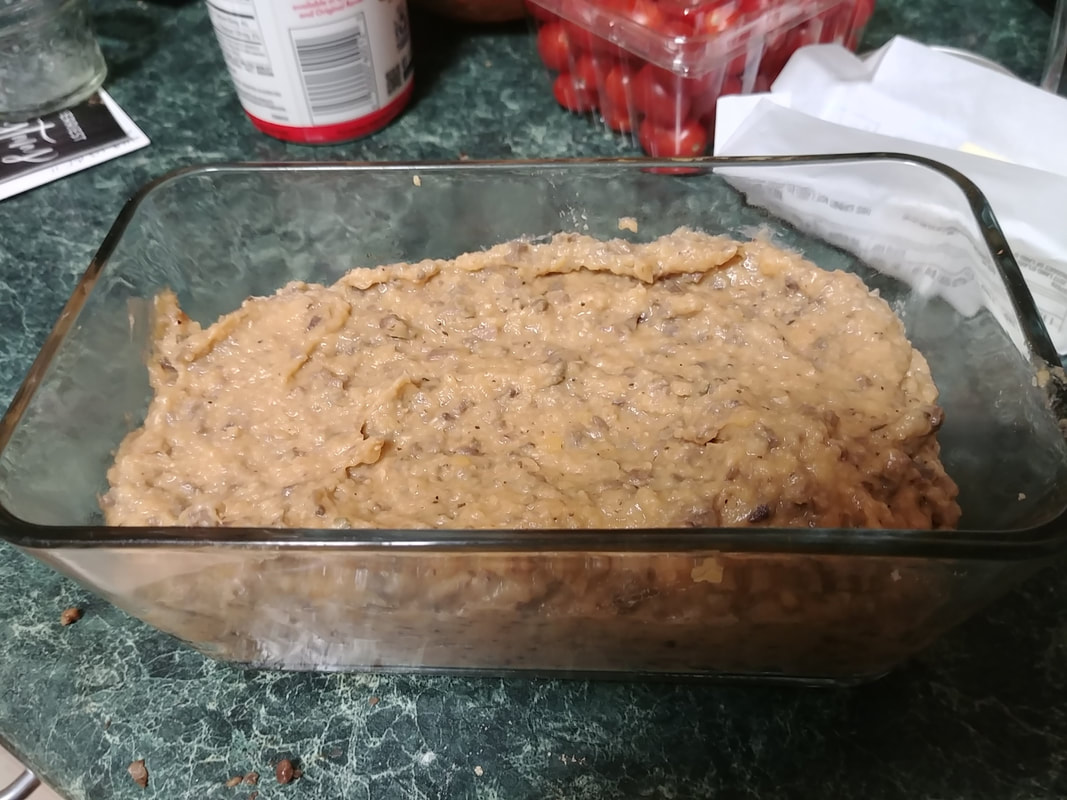
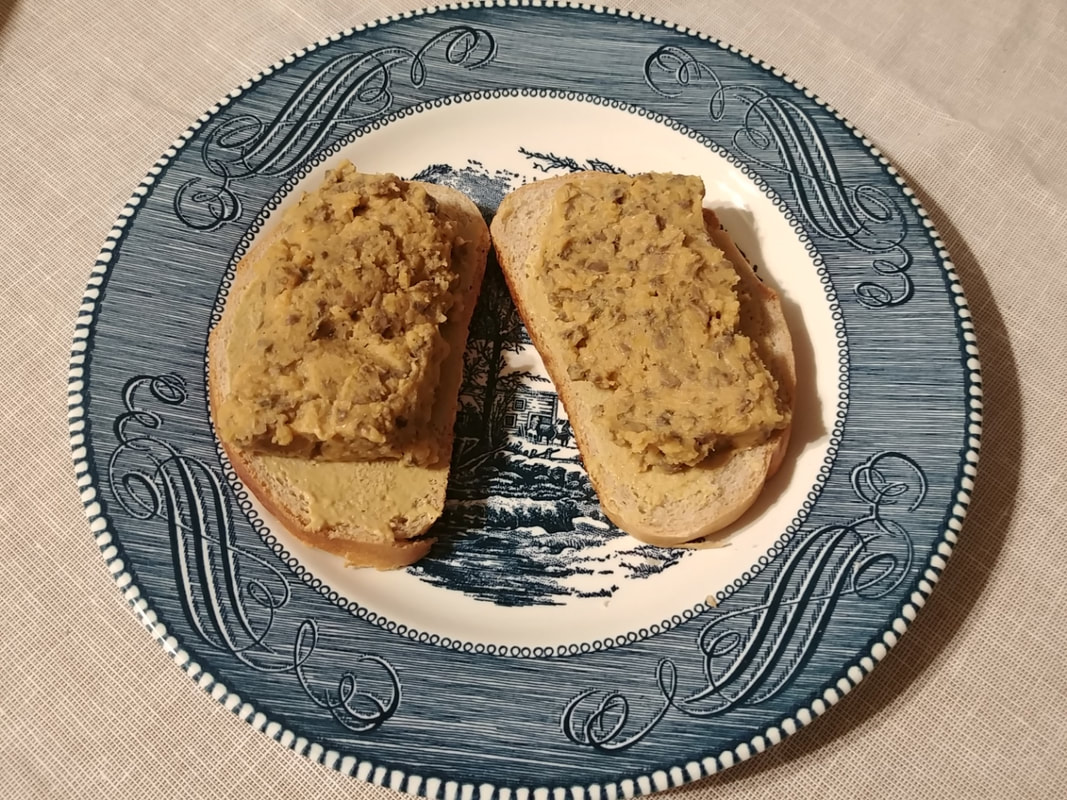

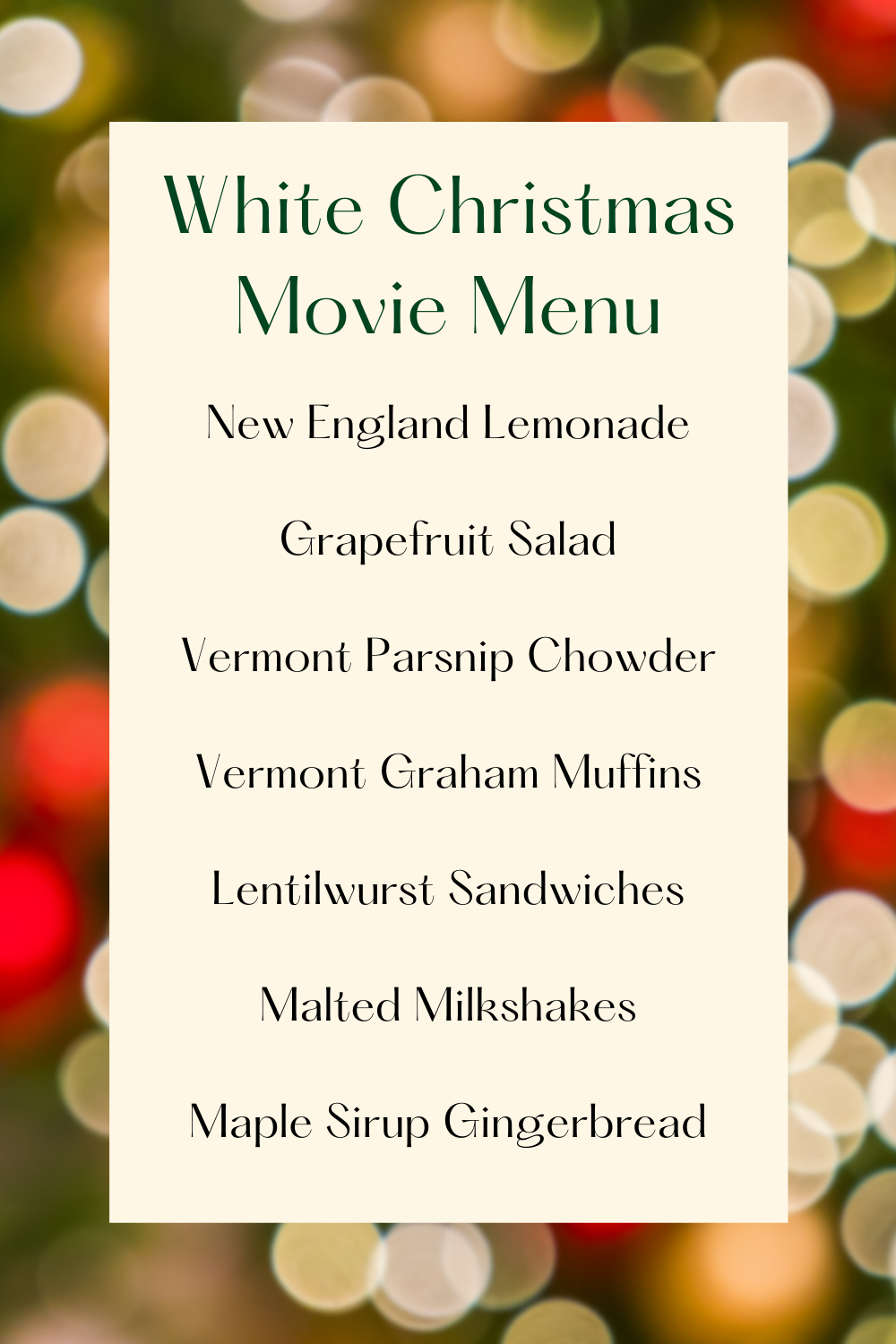
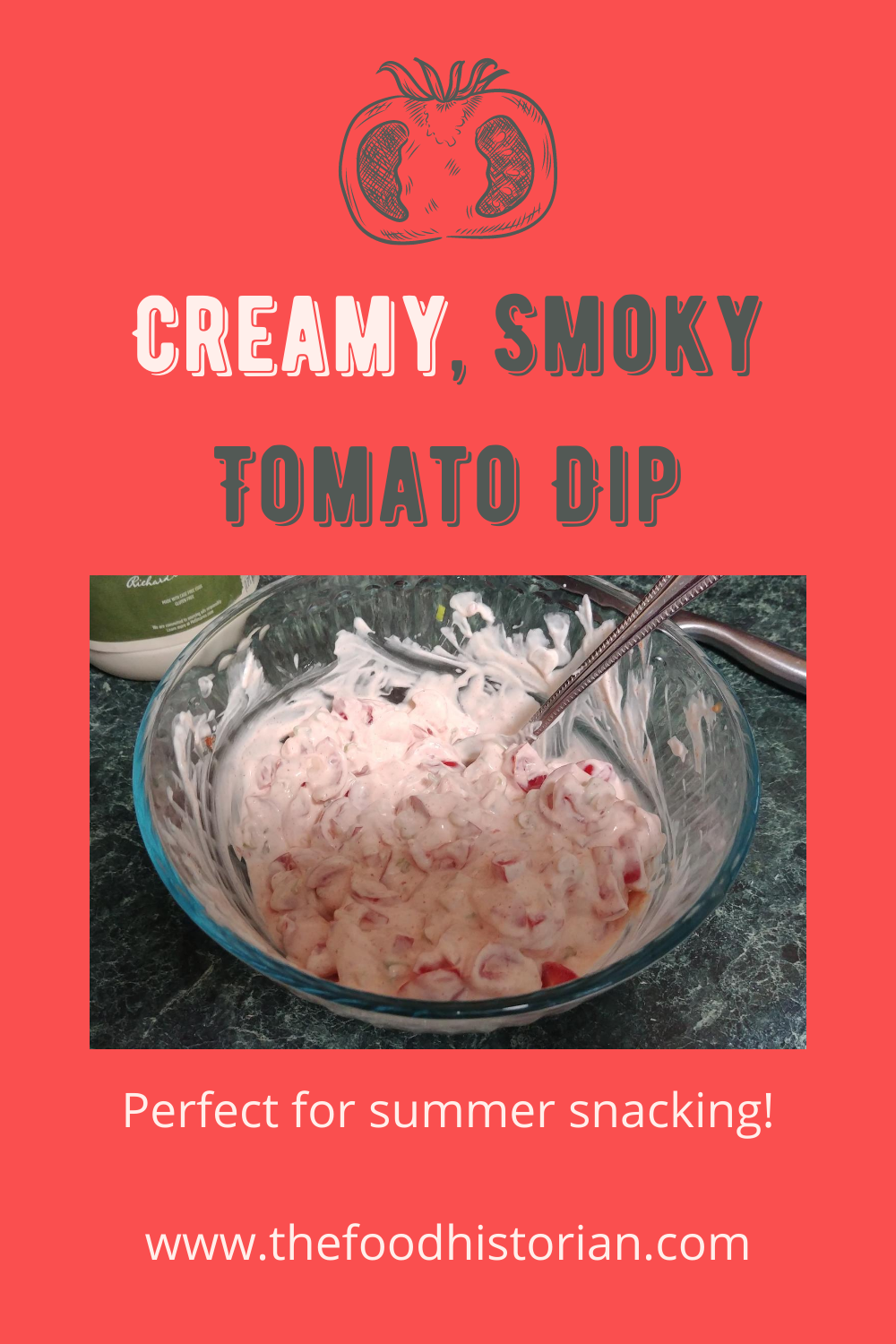
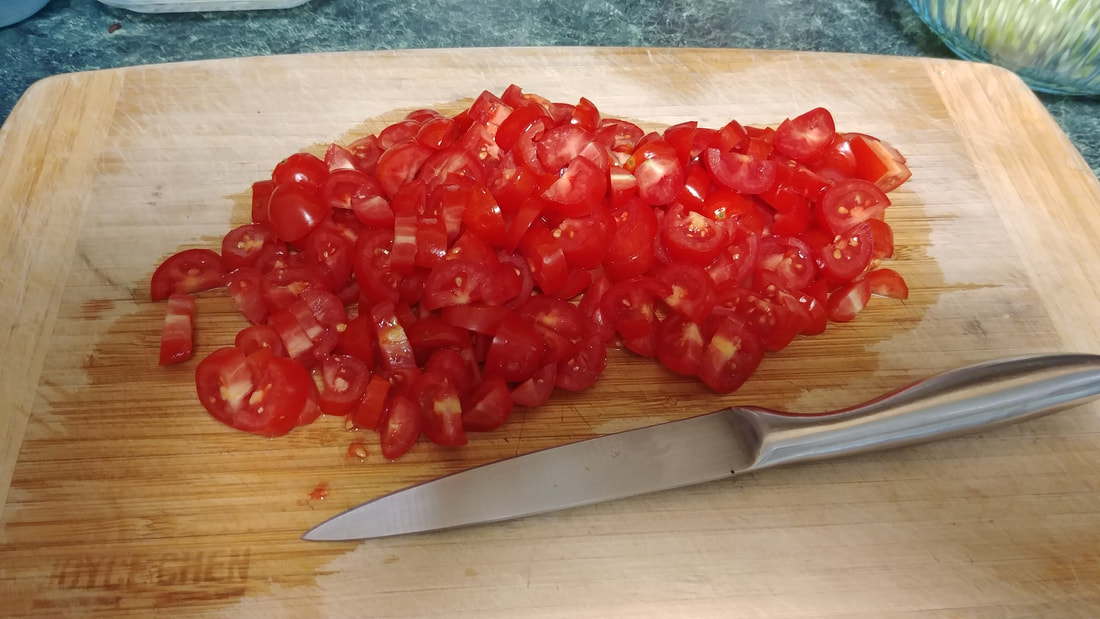
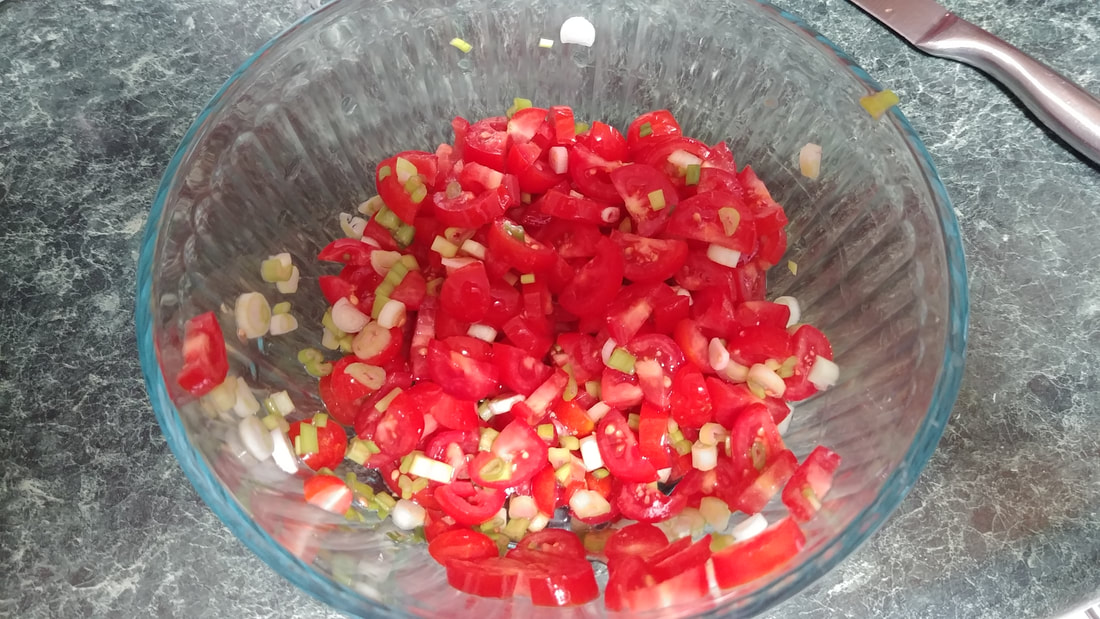
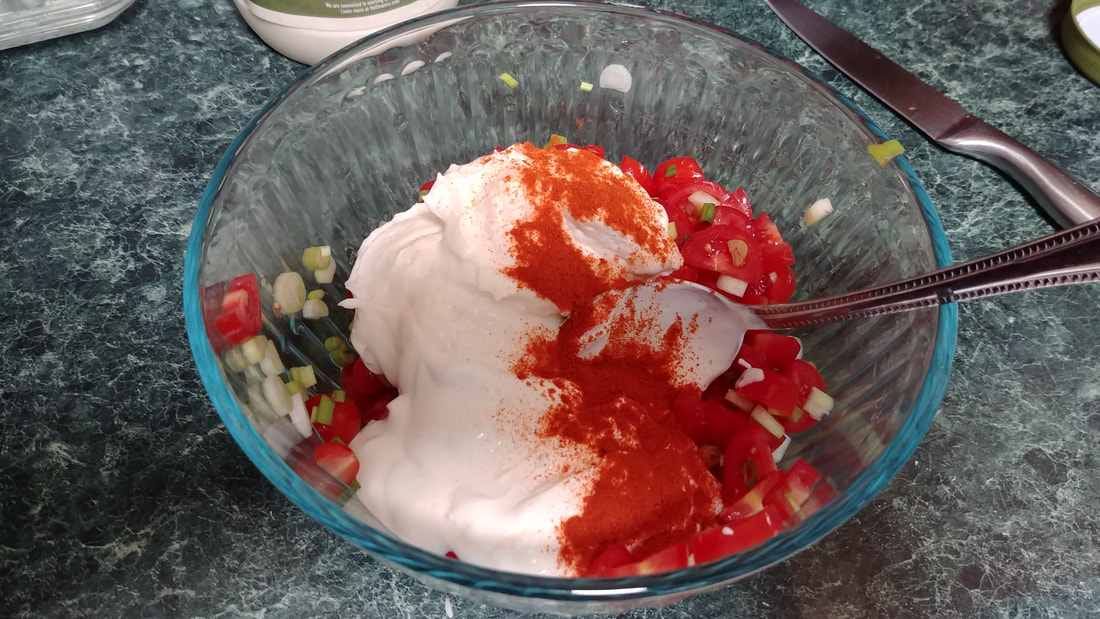
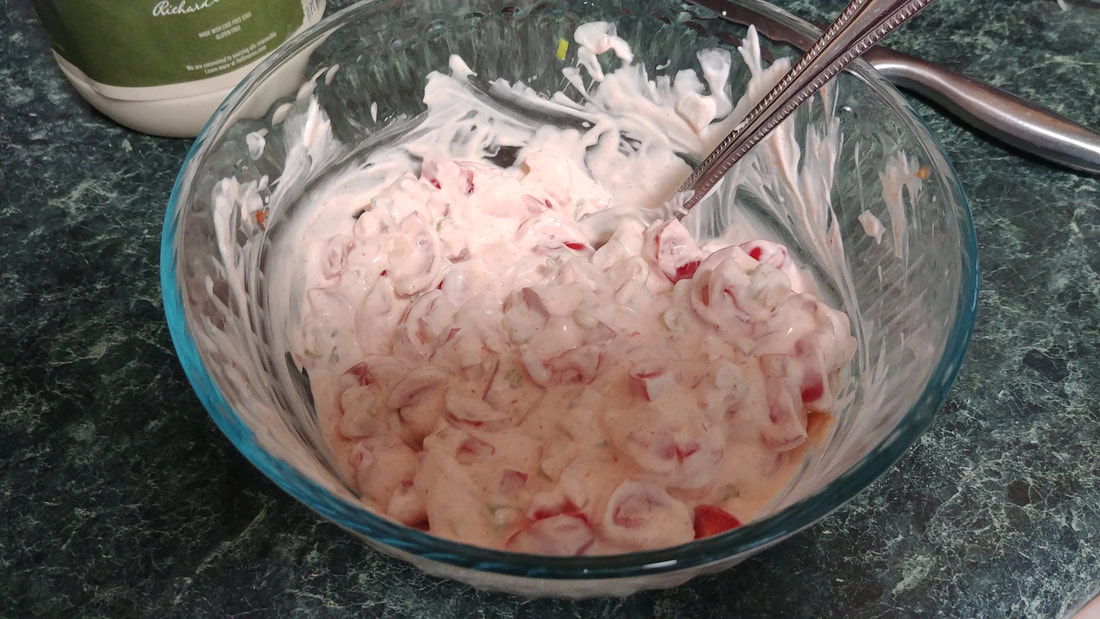
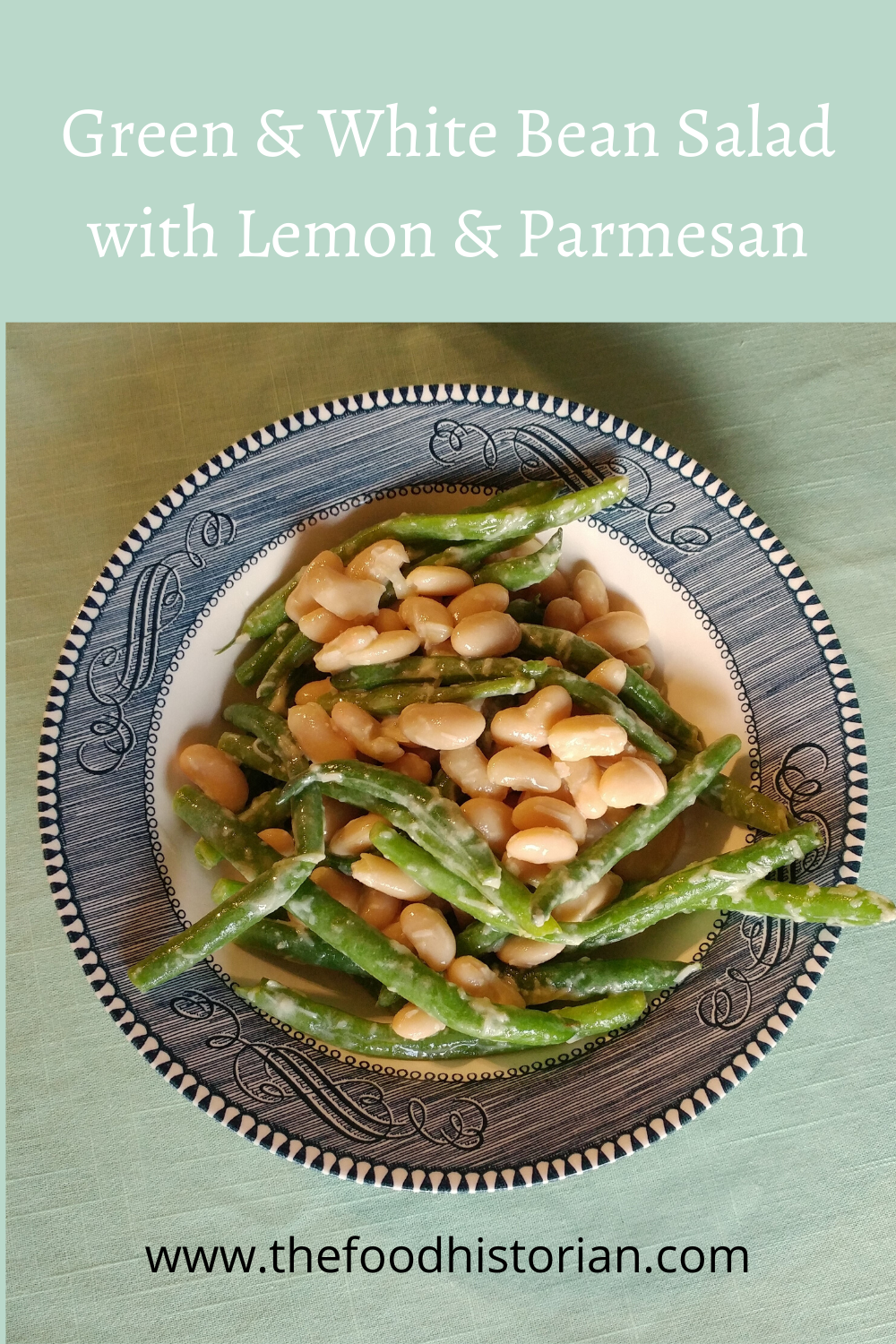
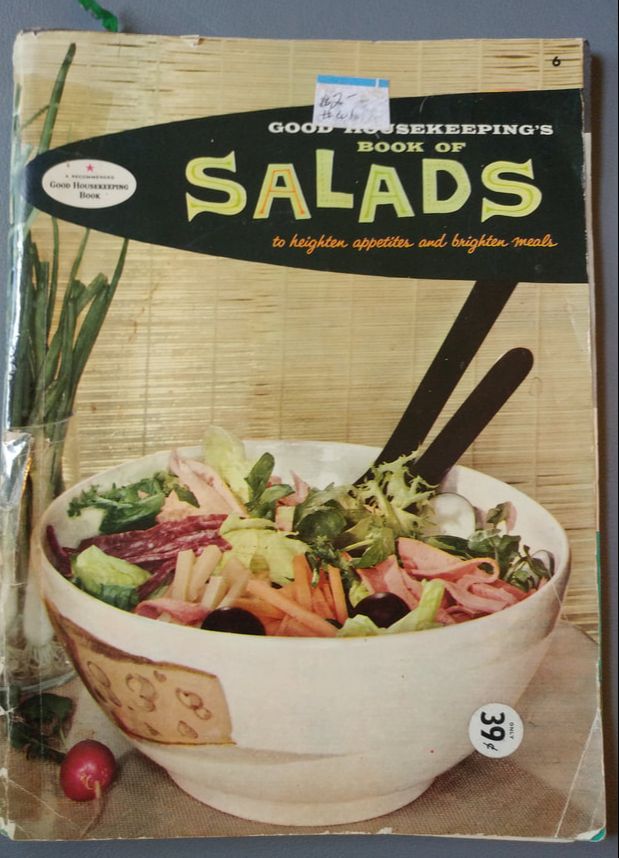
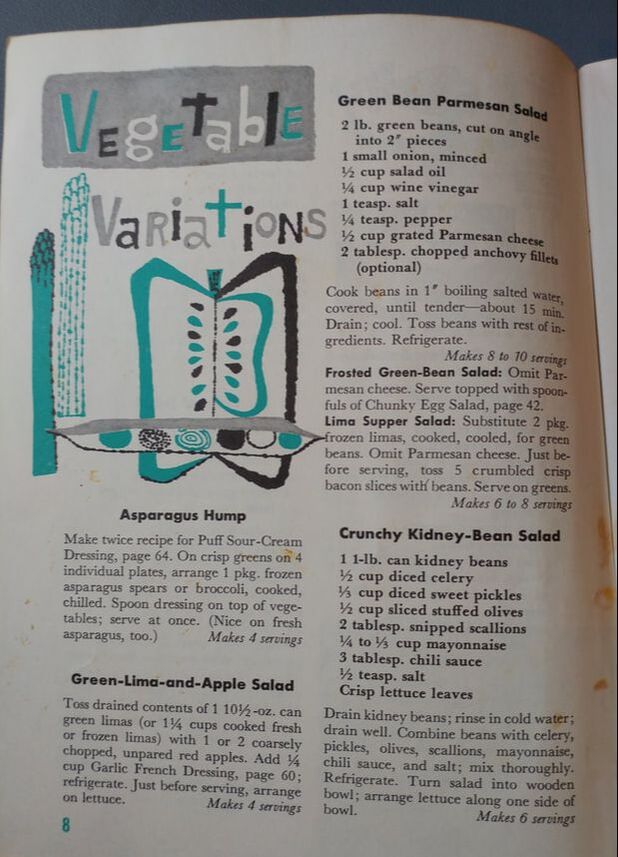
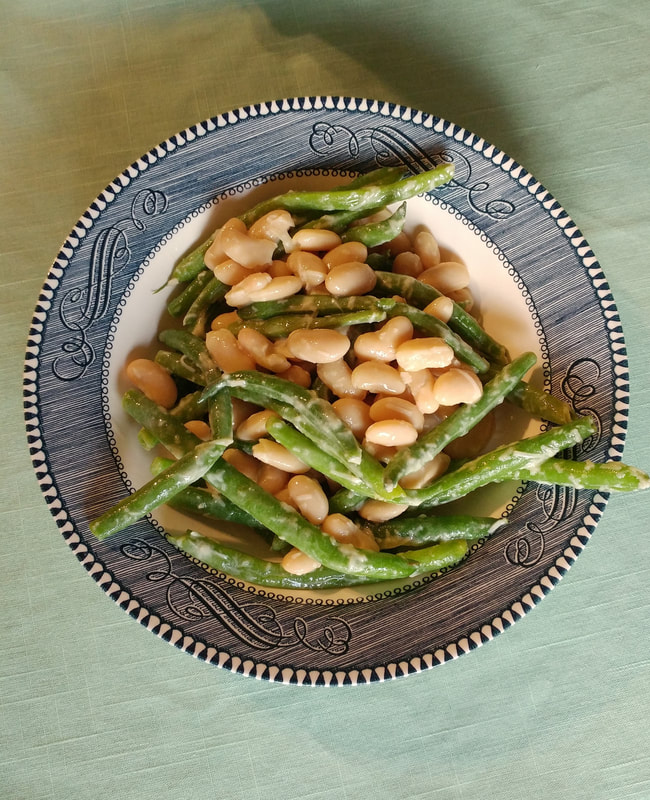
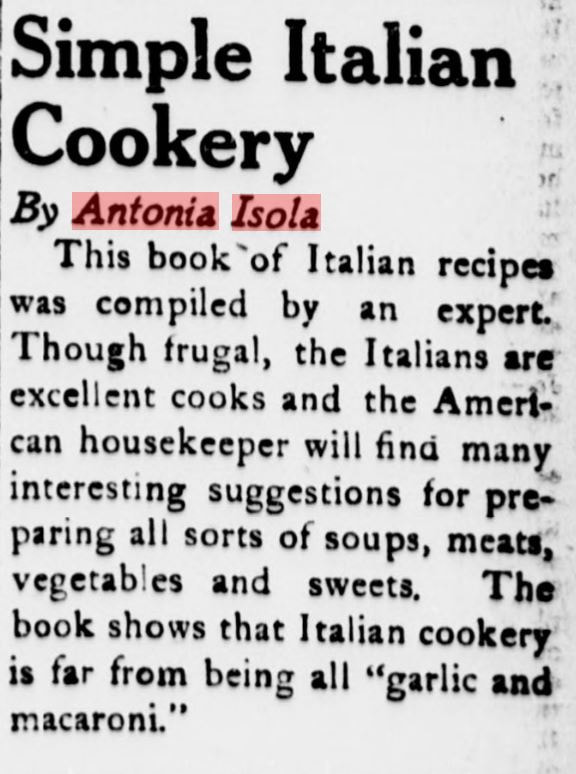
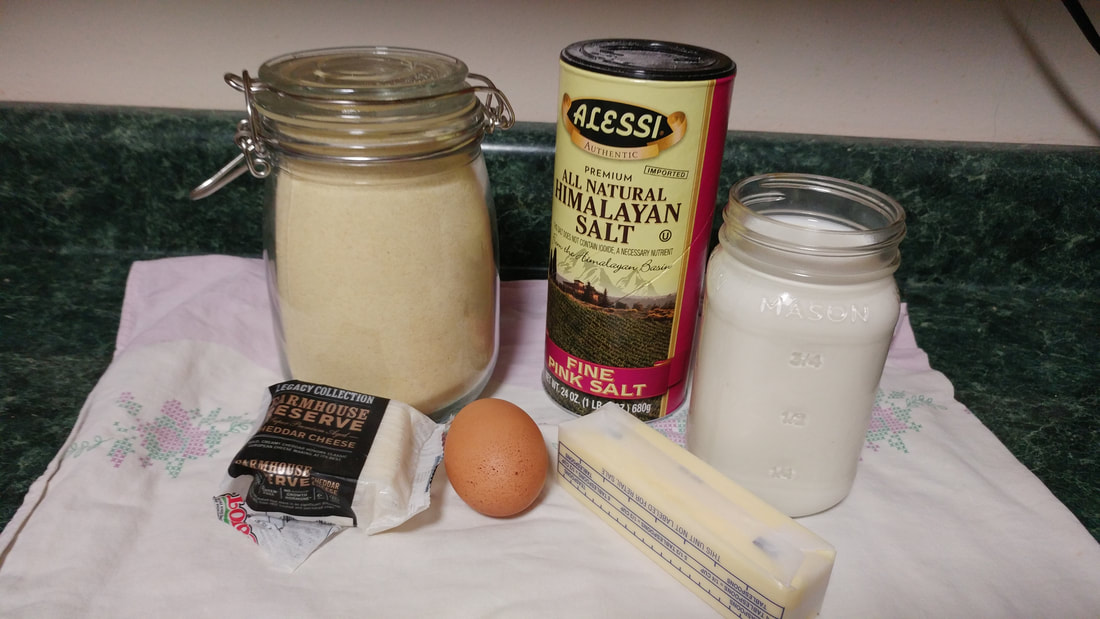
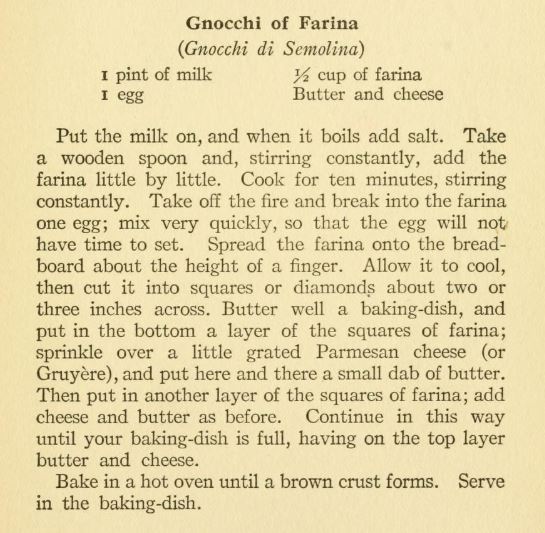
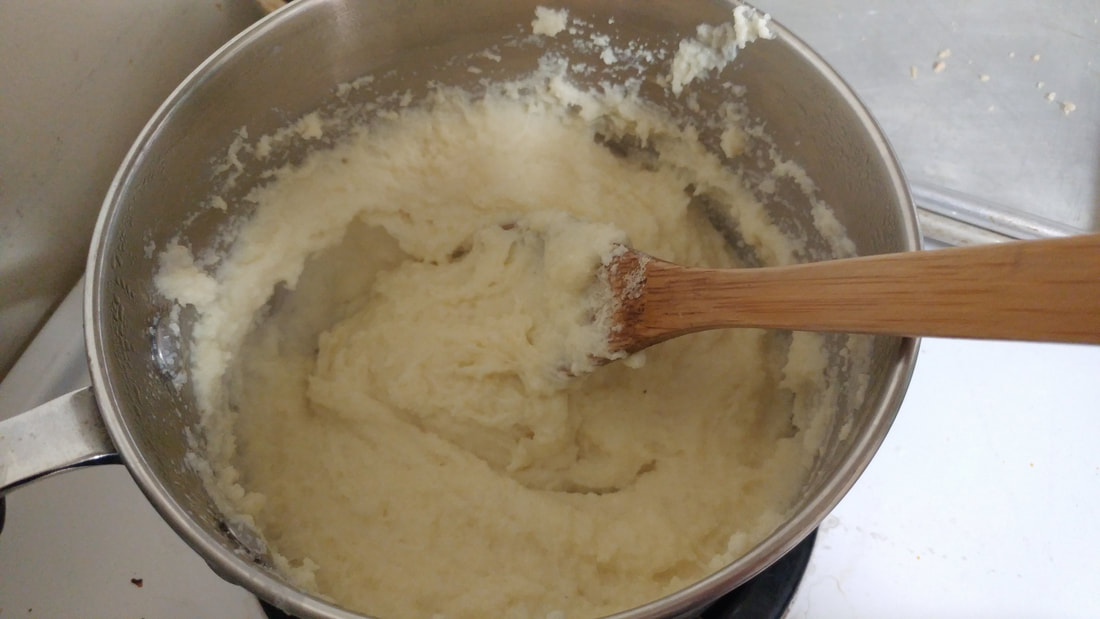
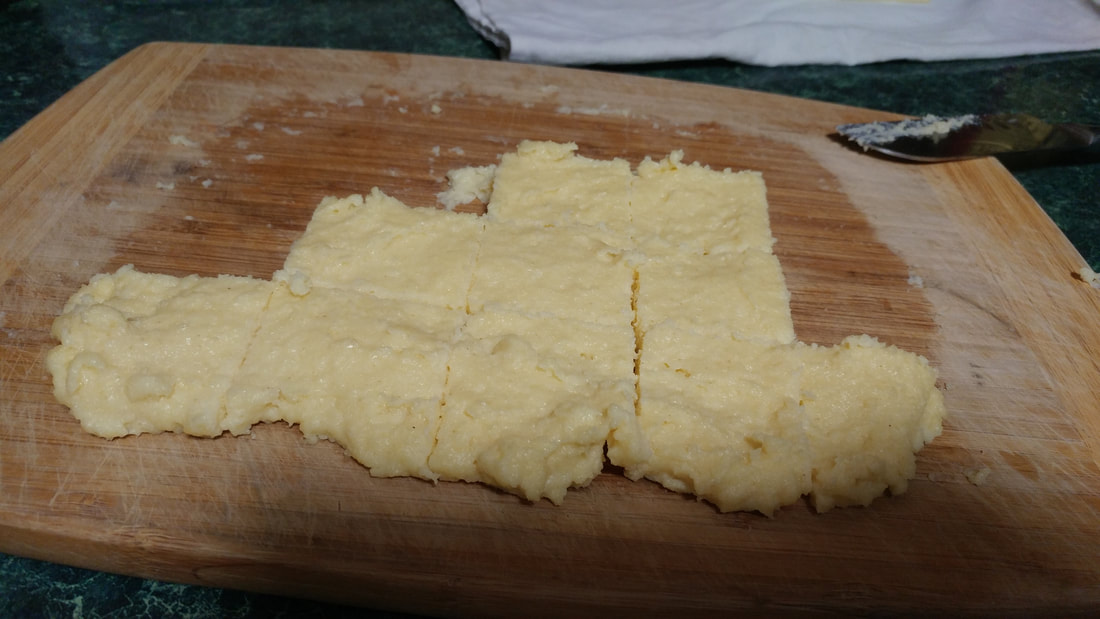
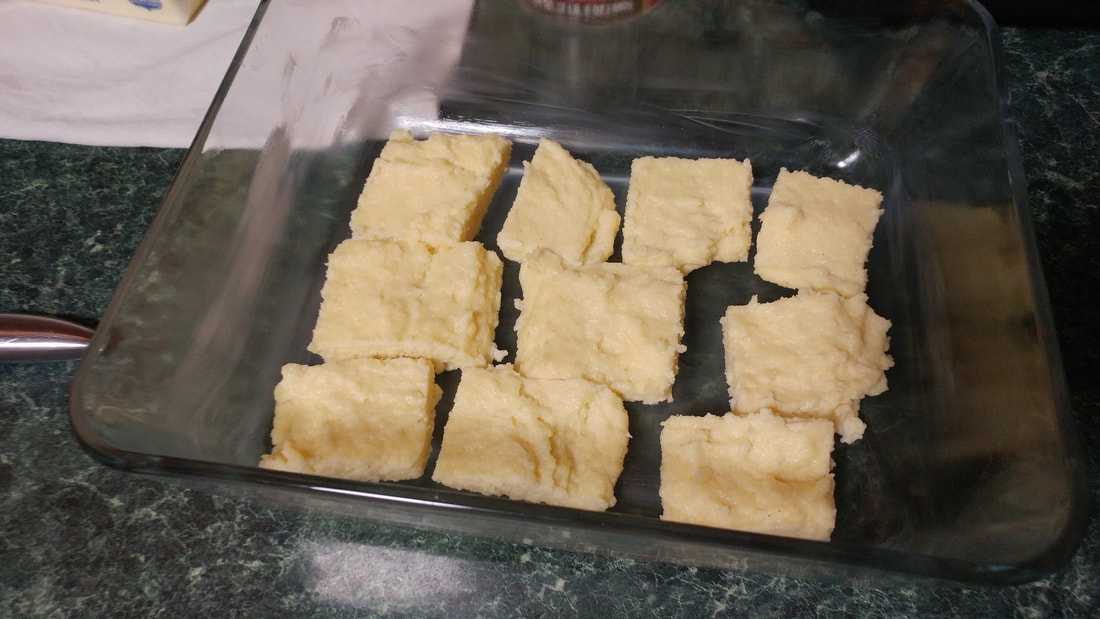
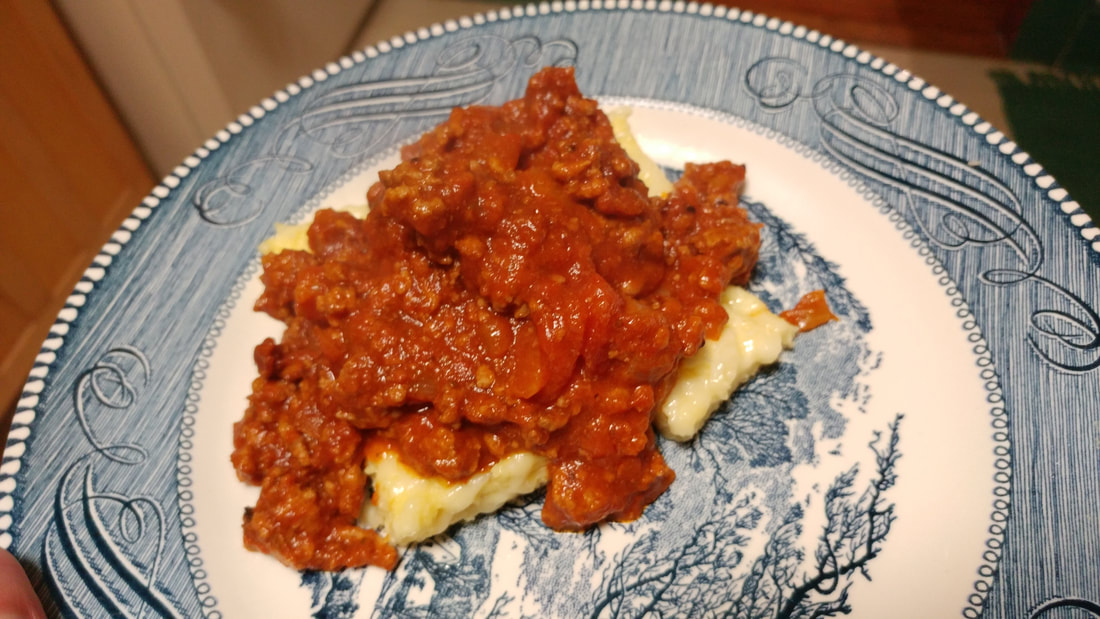

 RSS Feed
RSS Feed